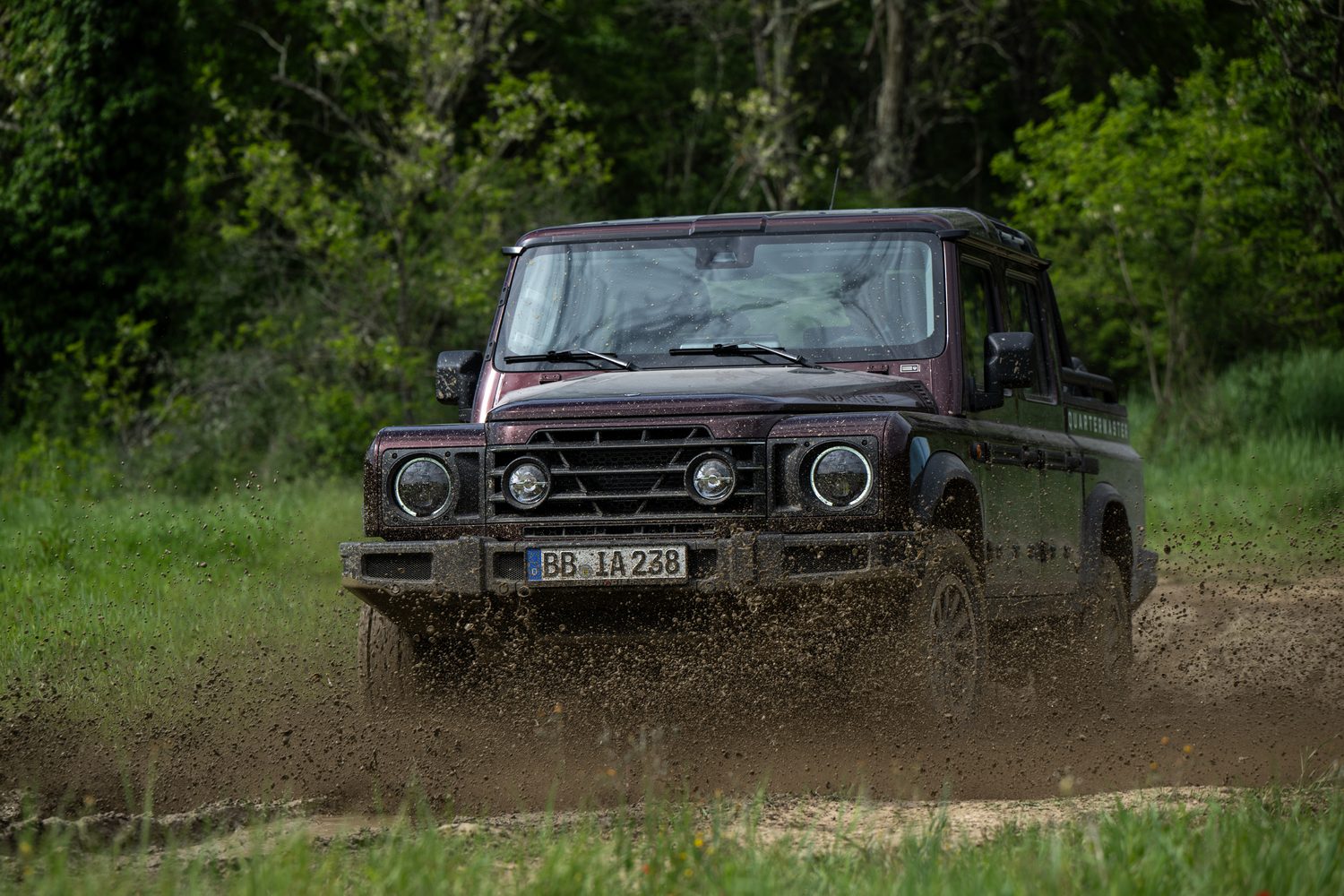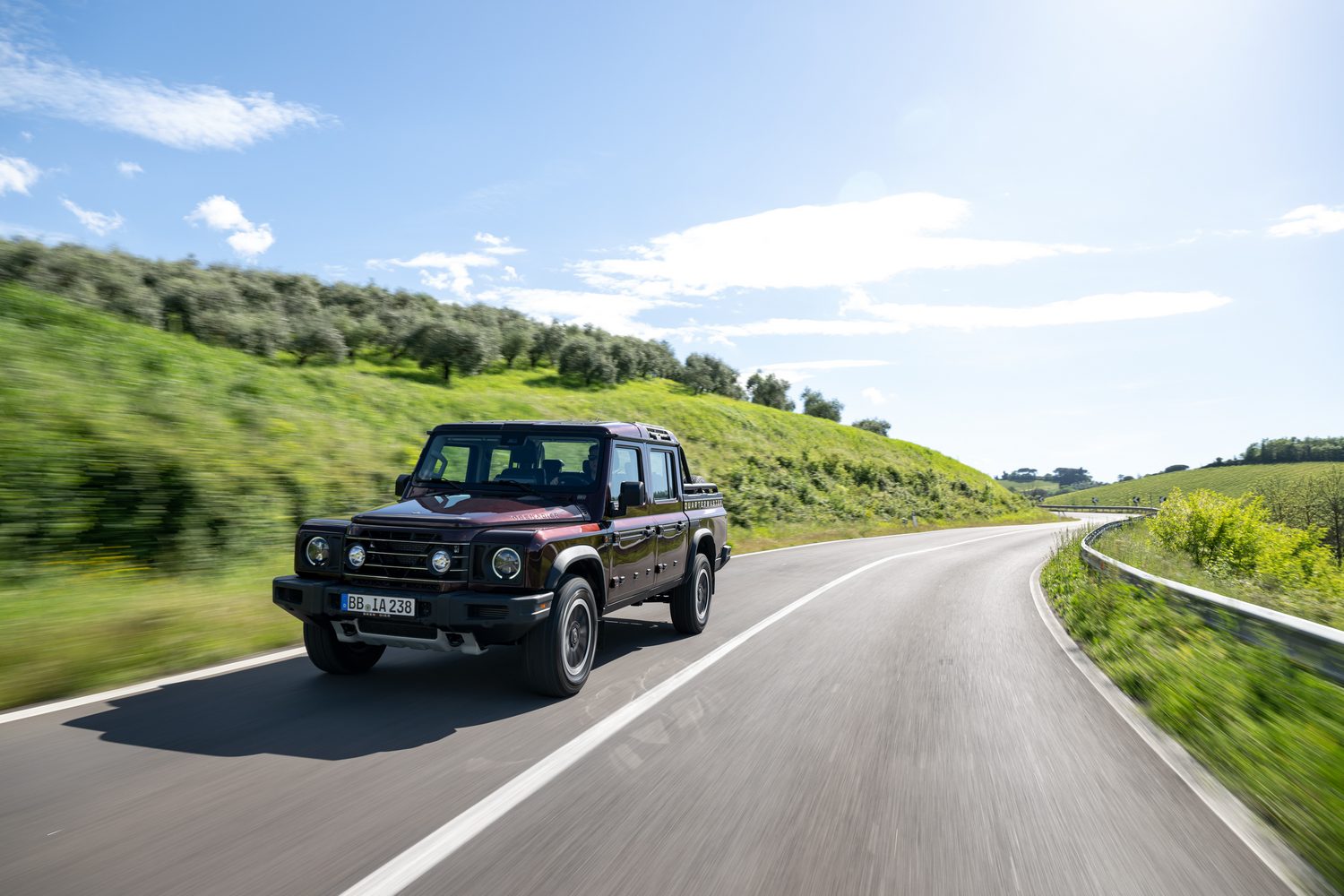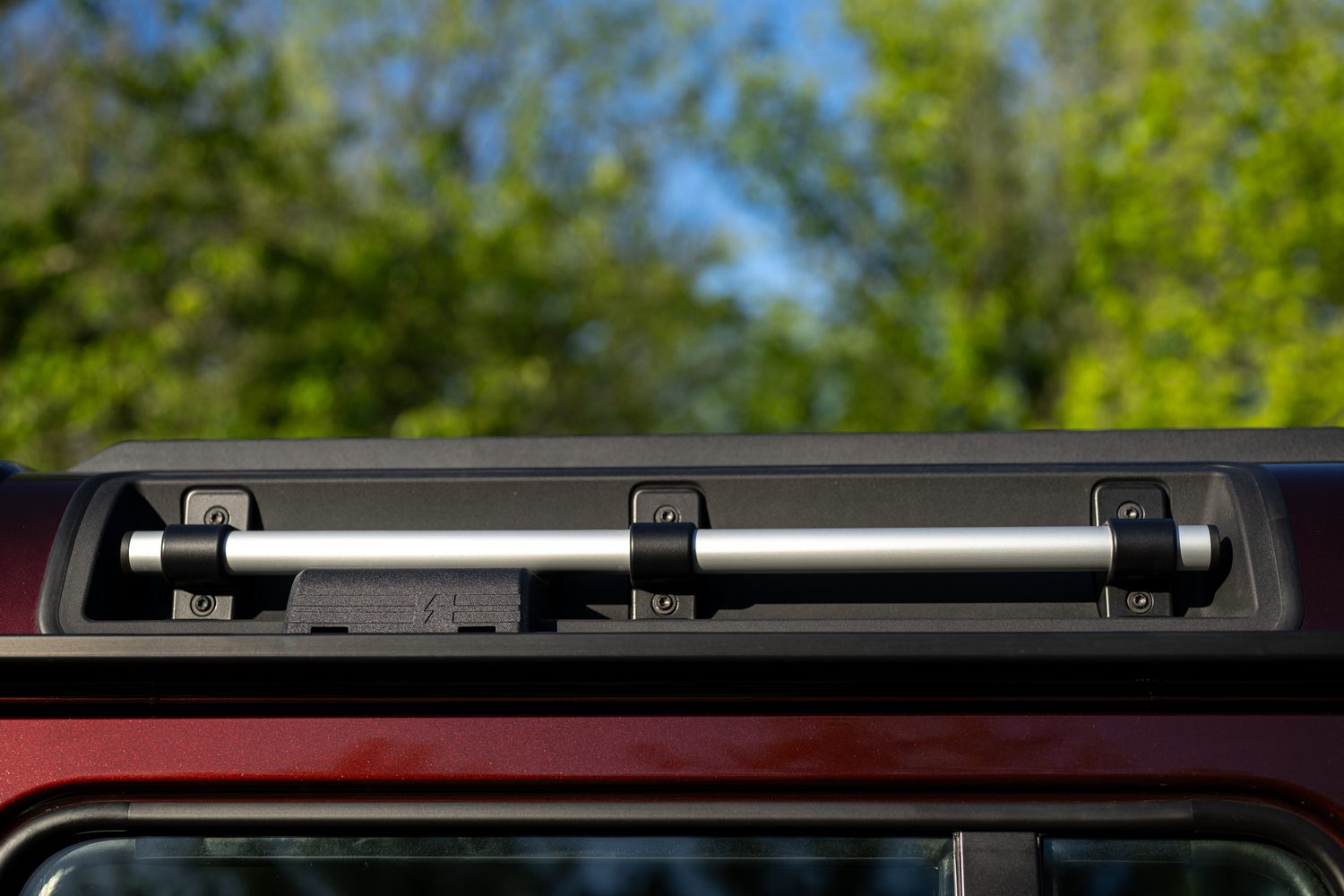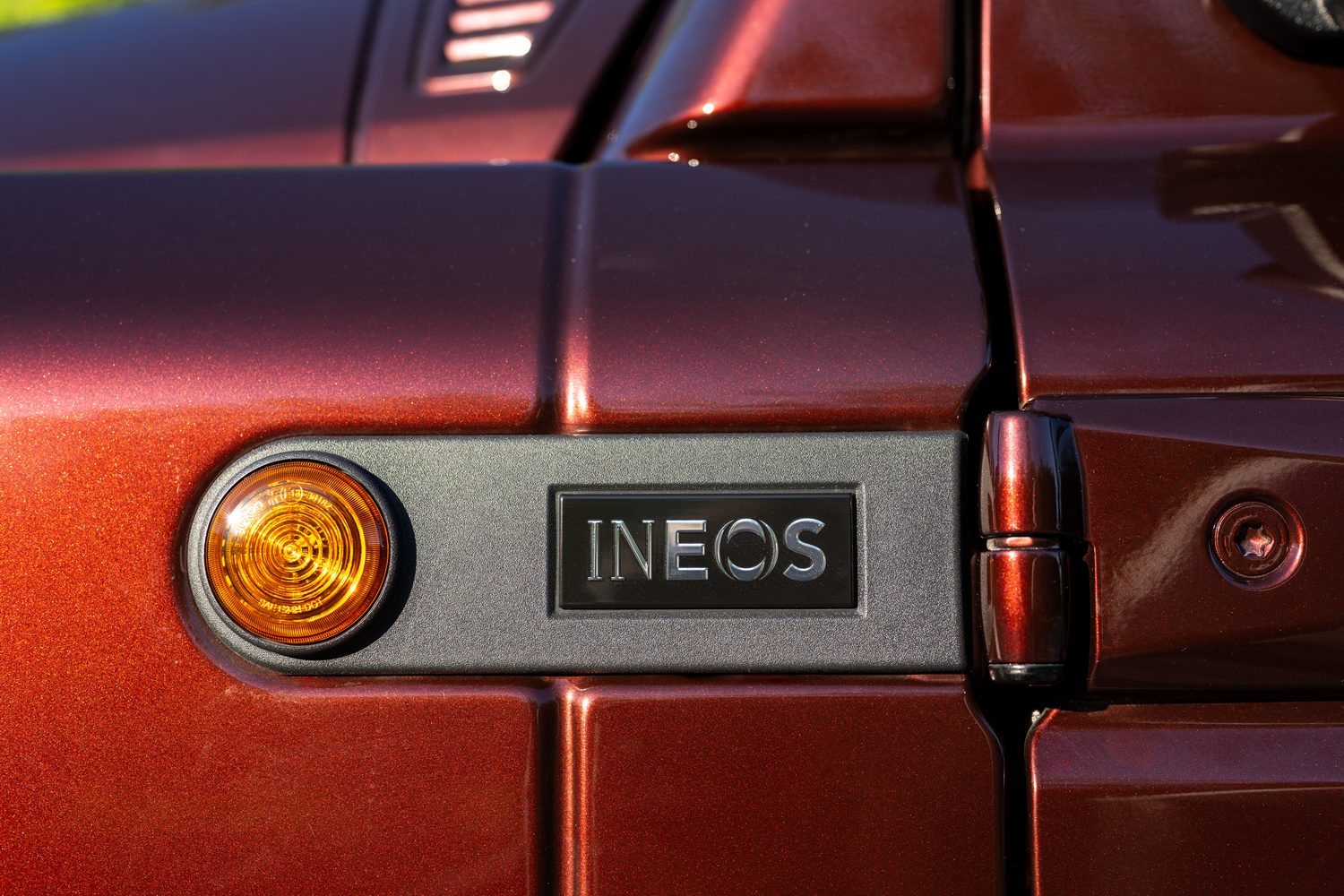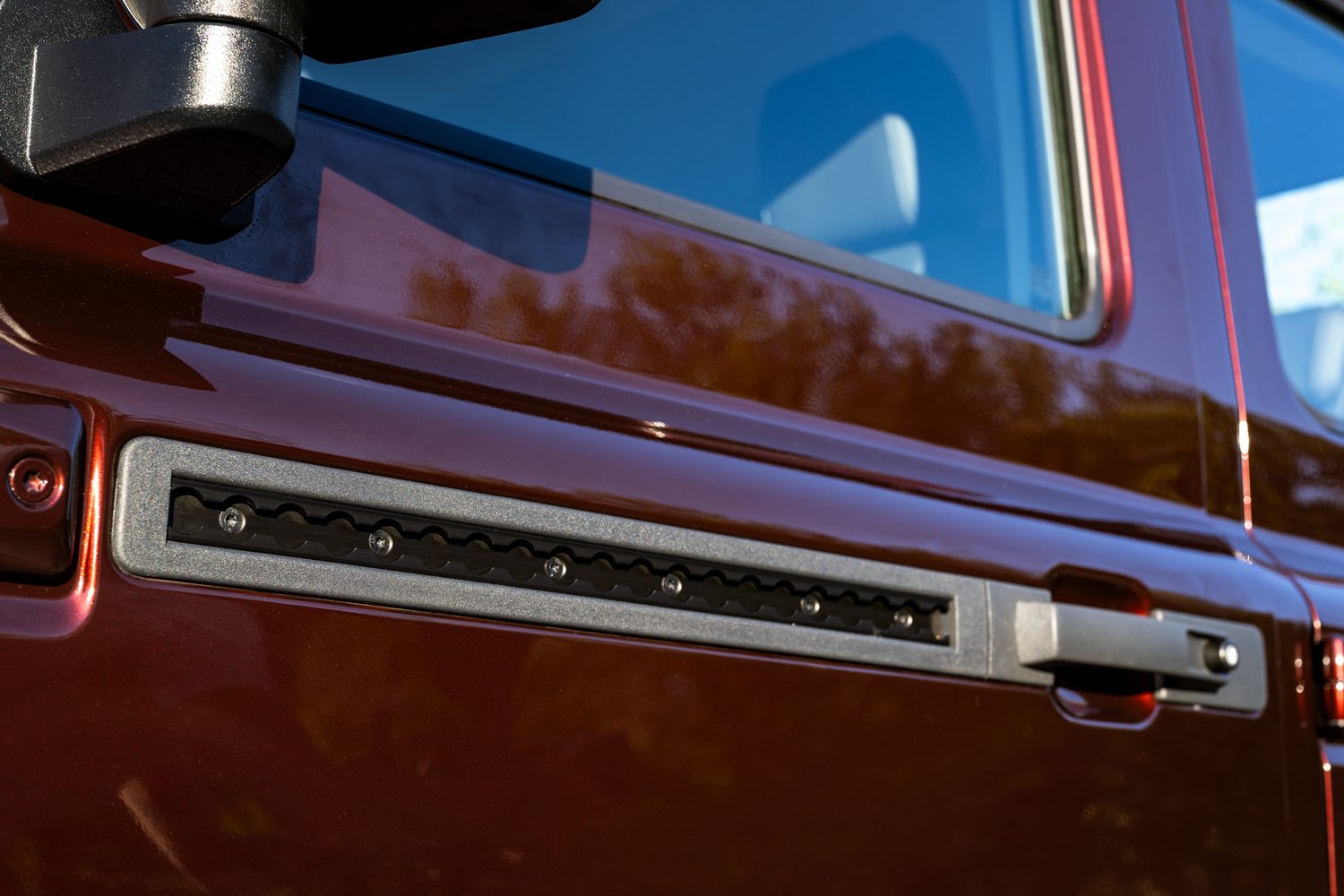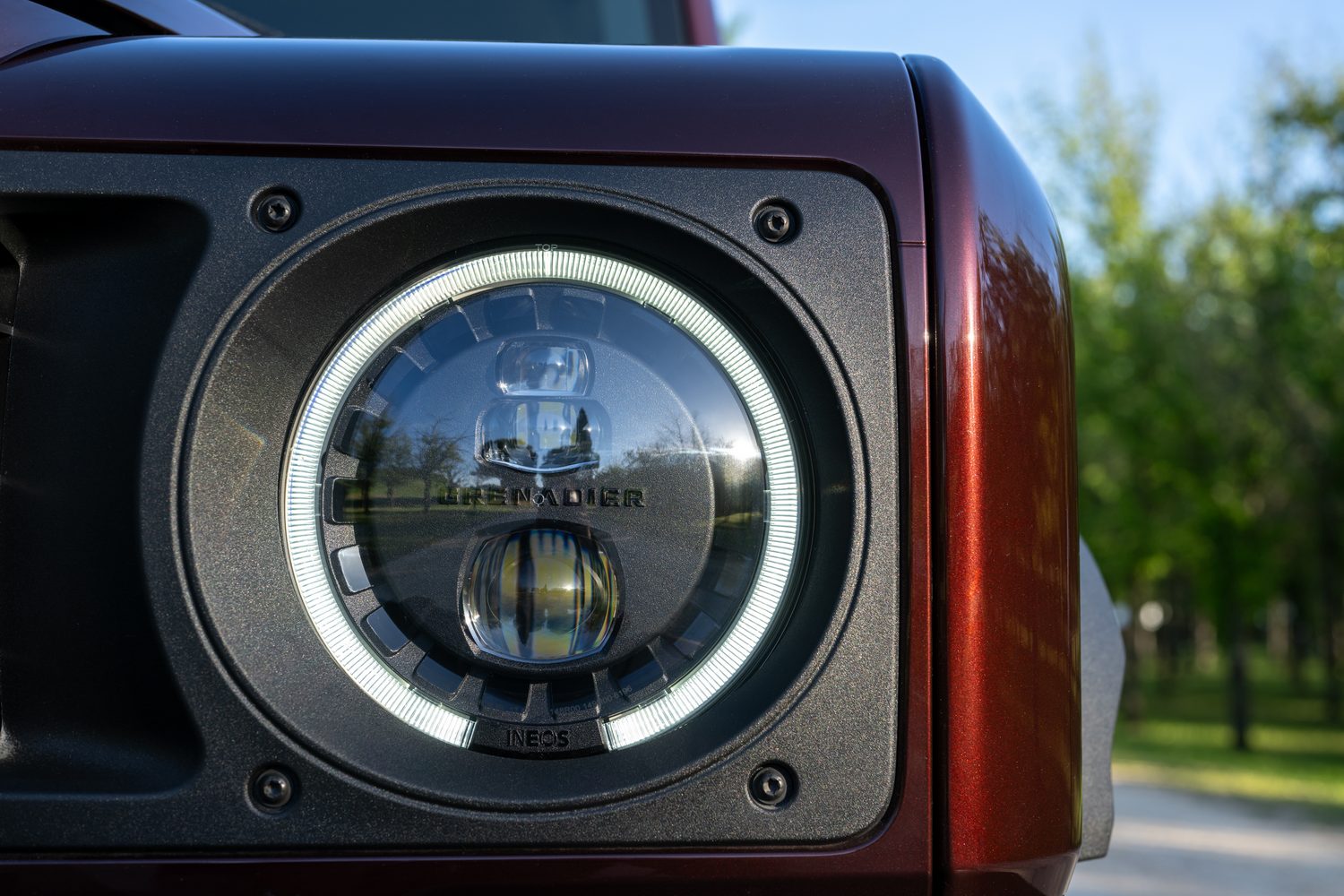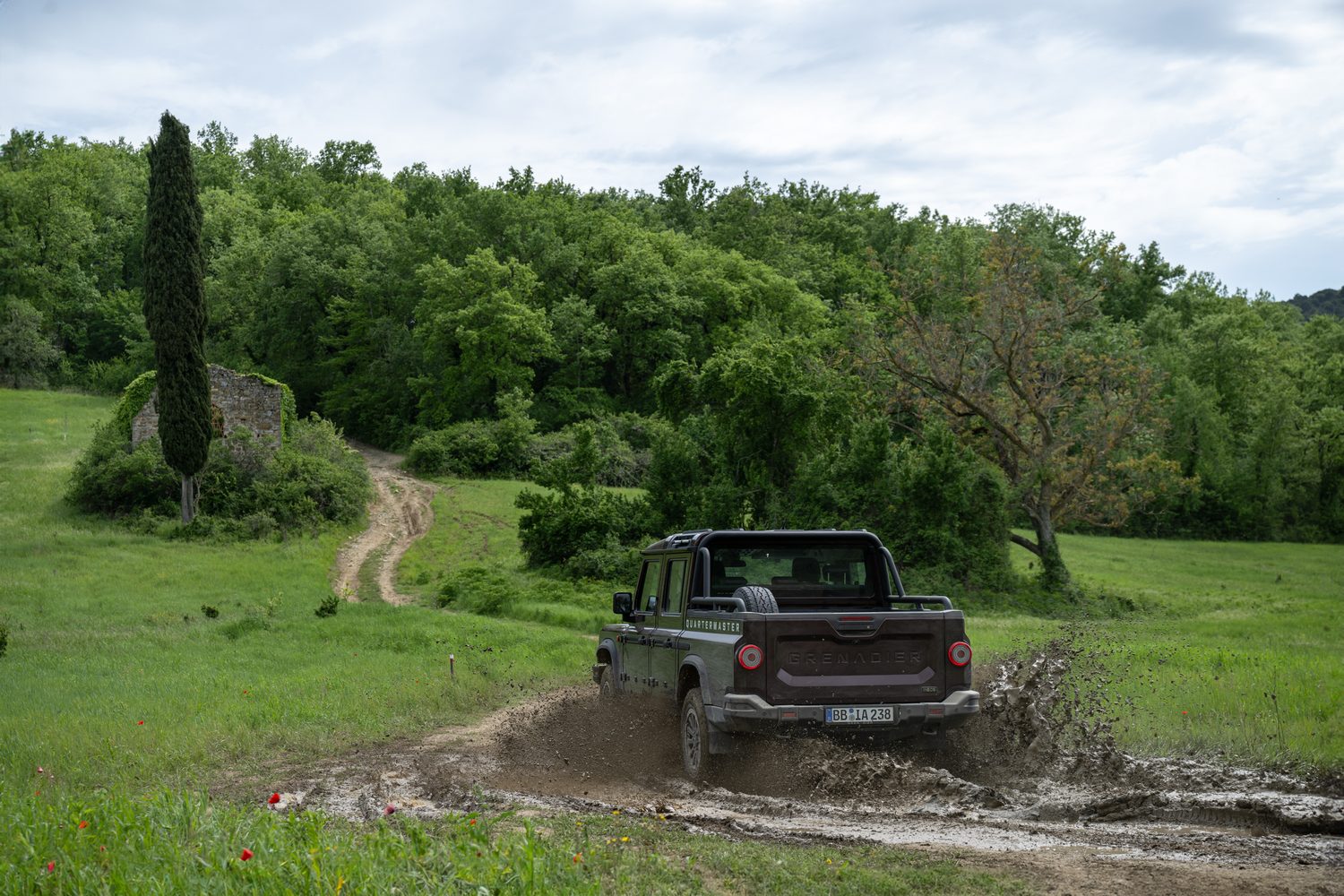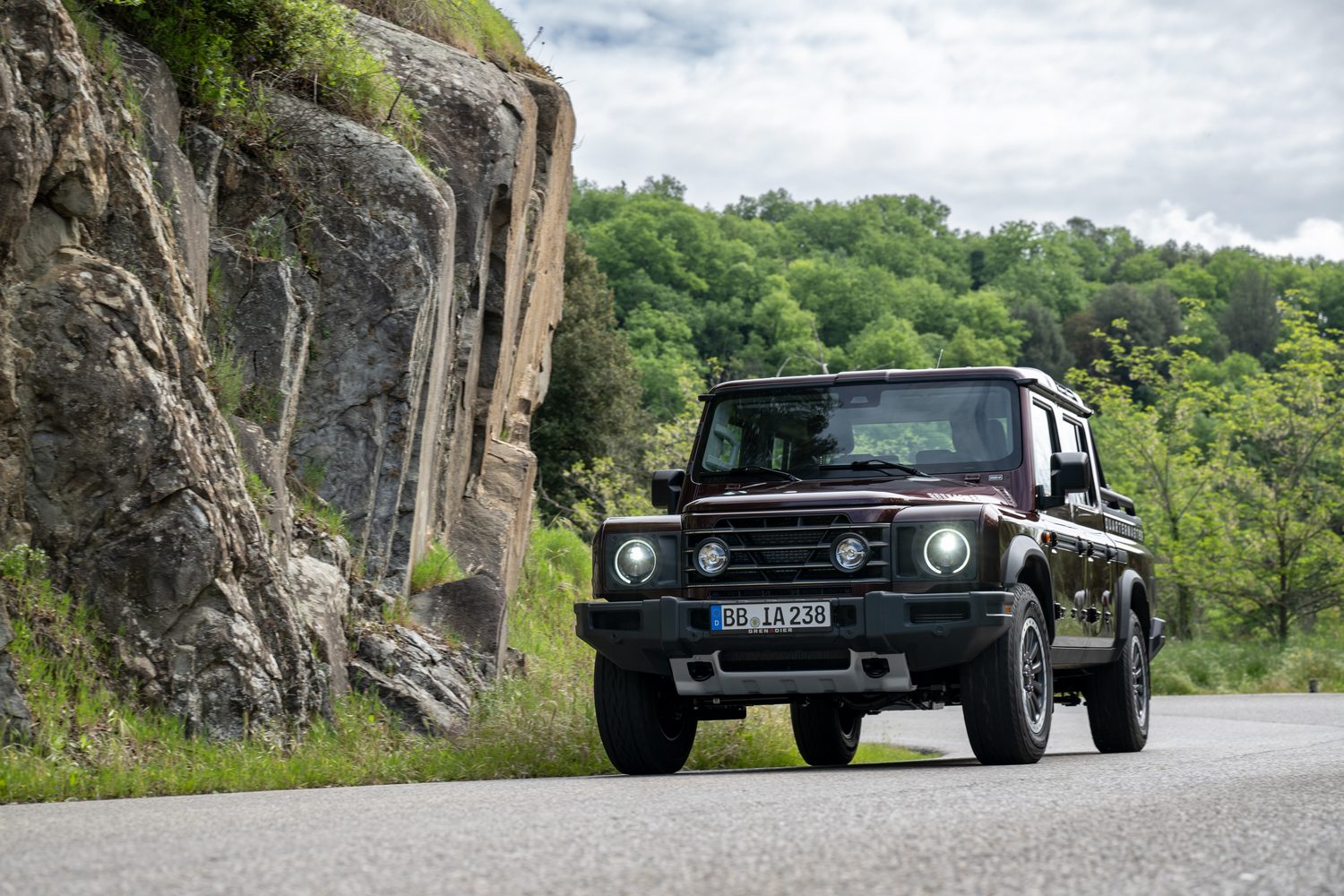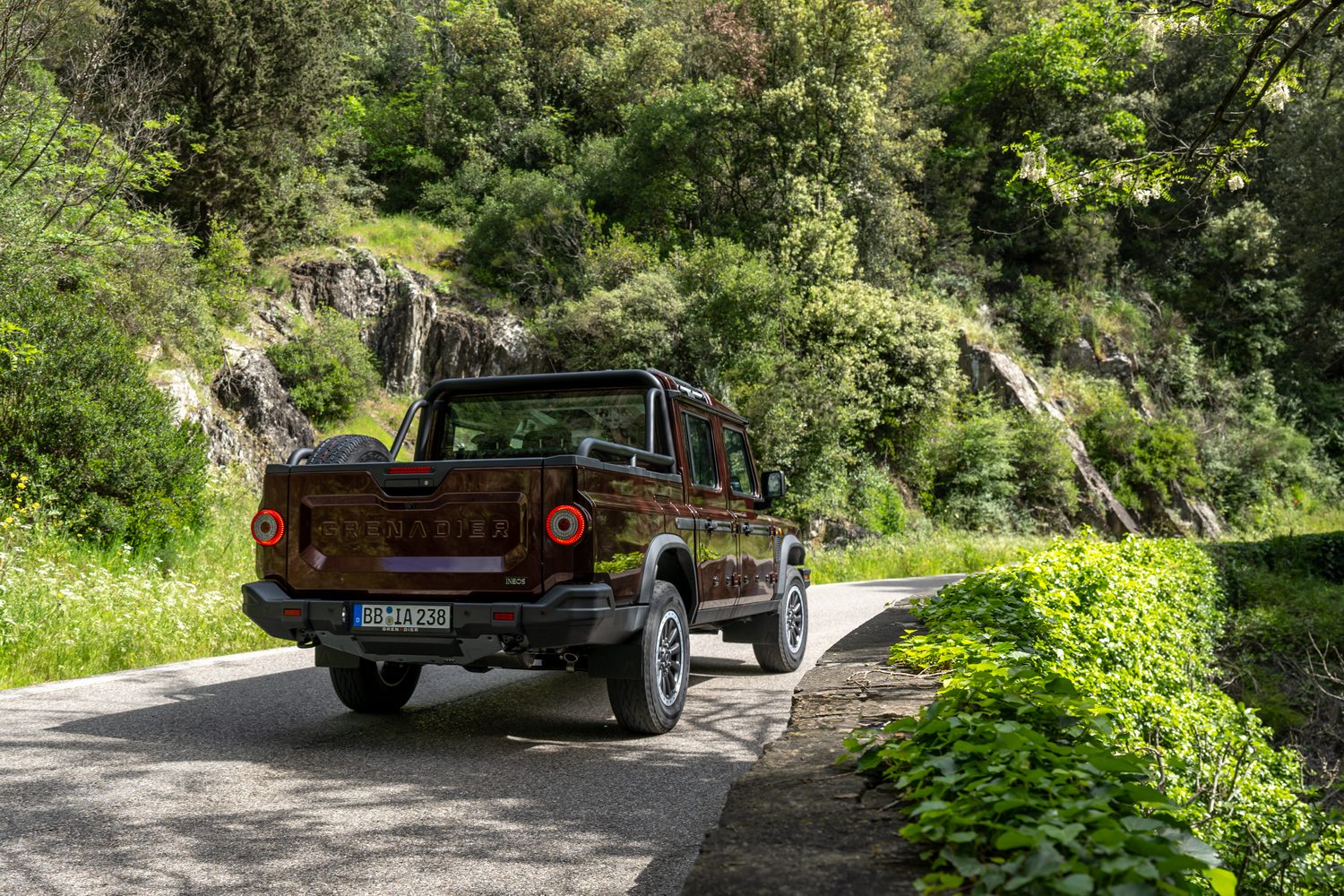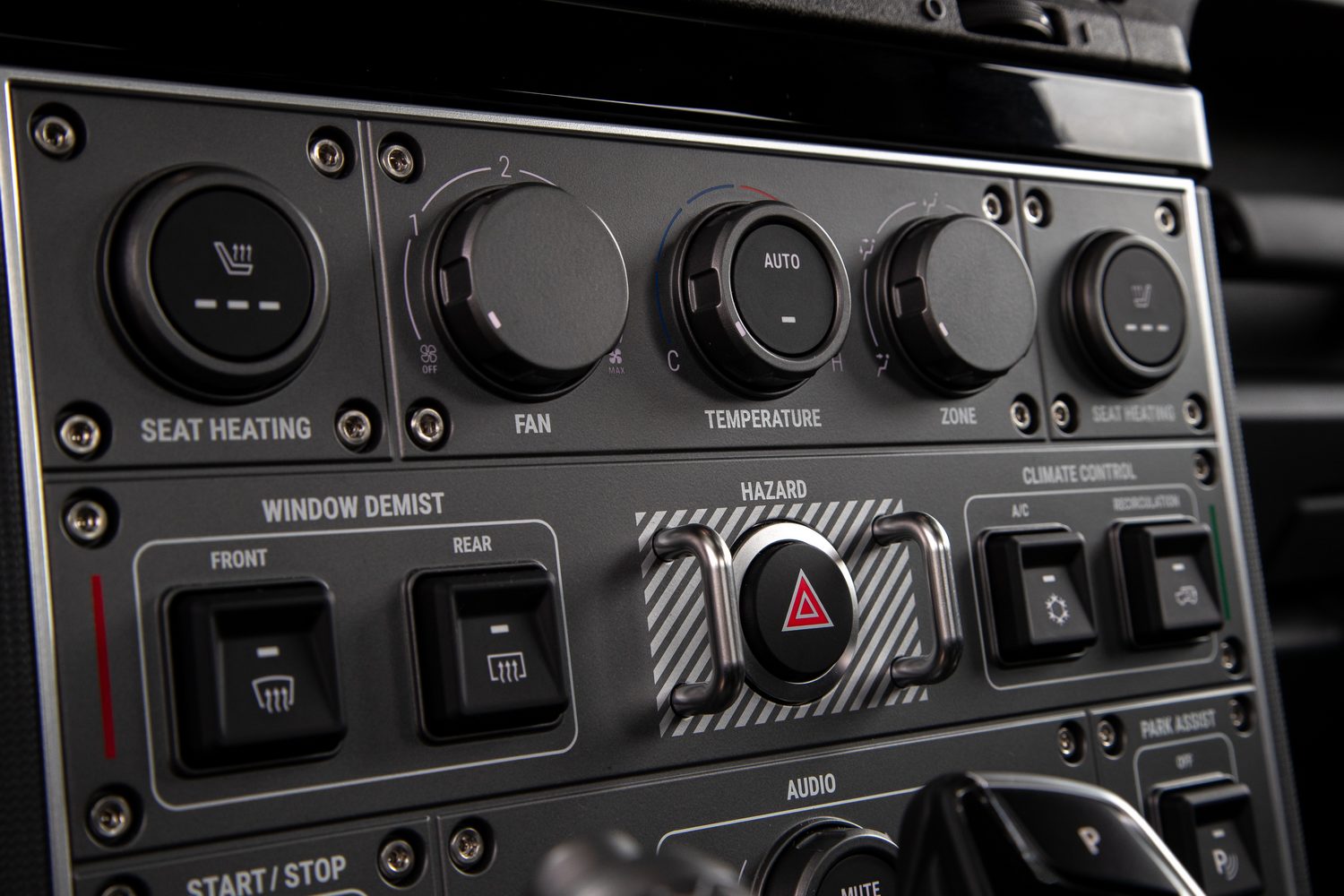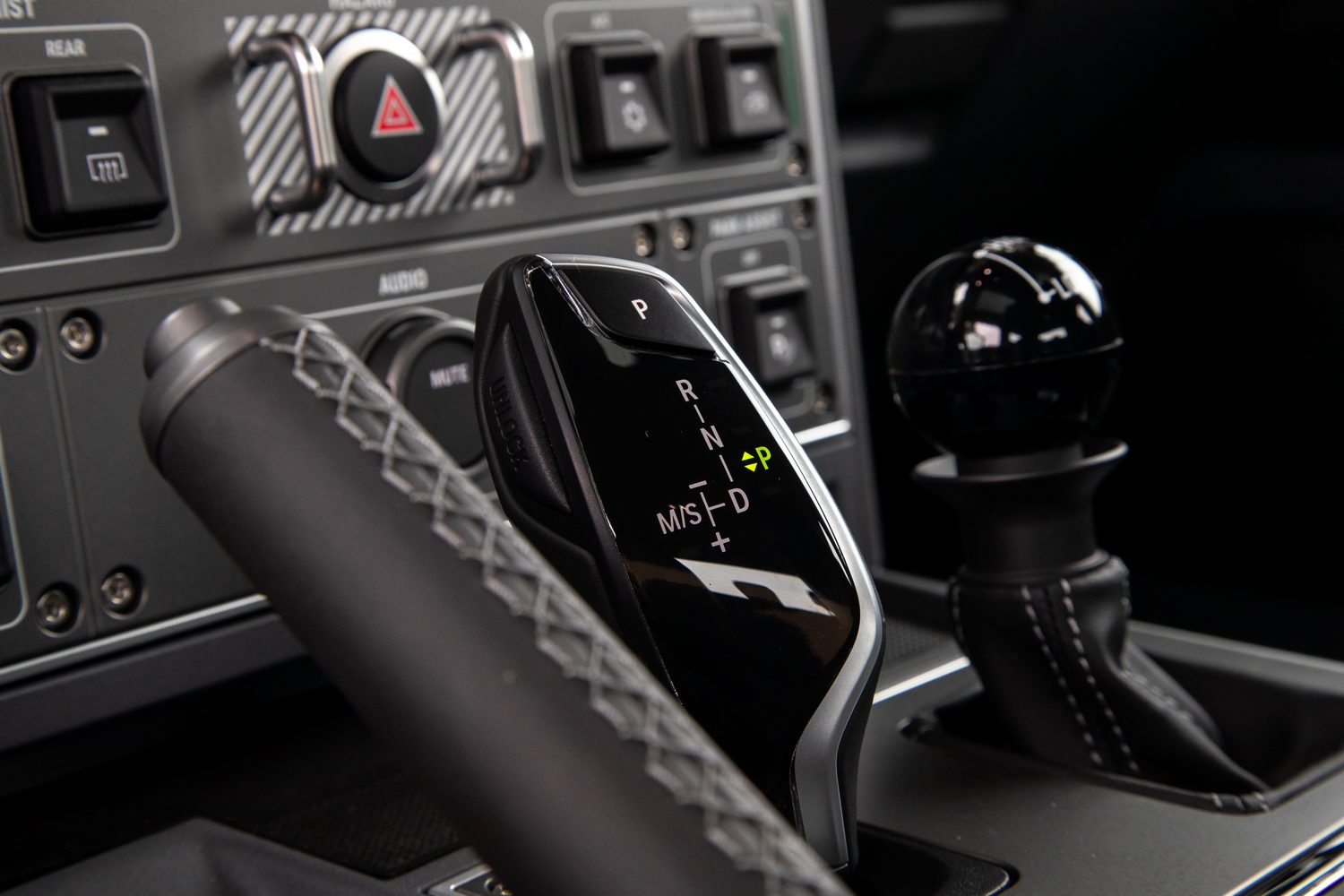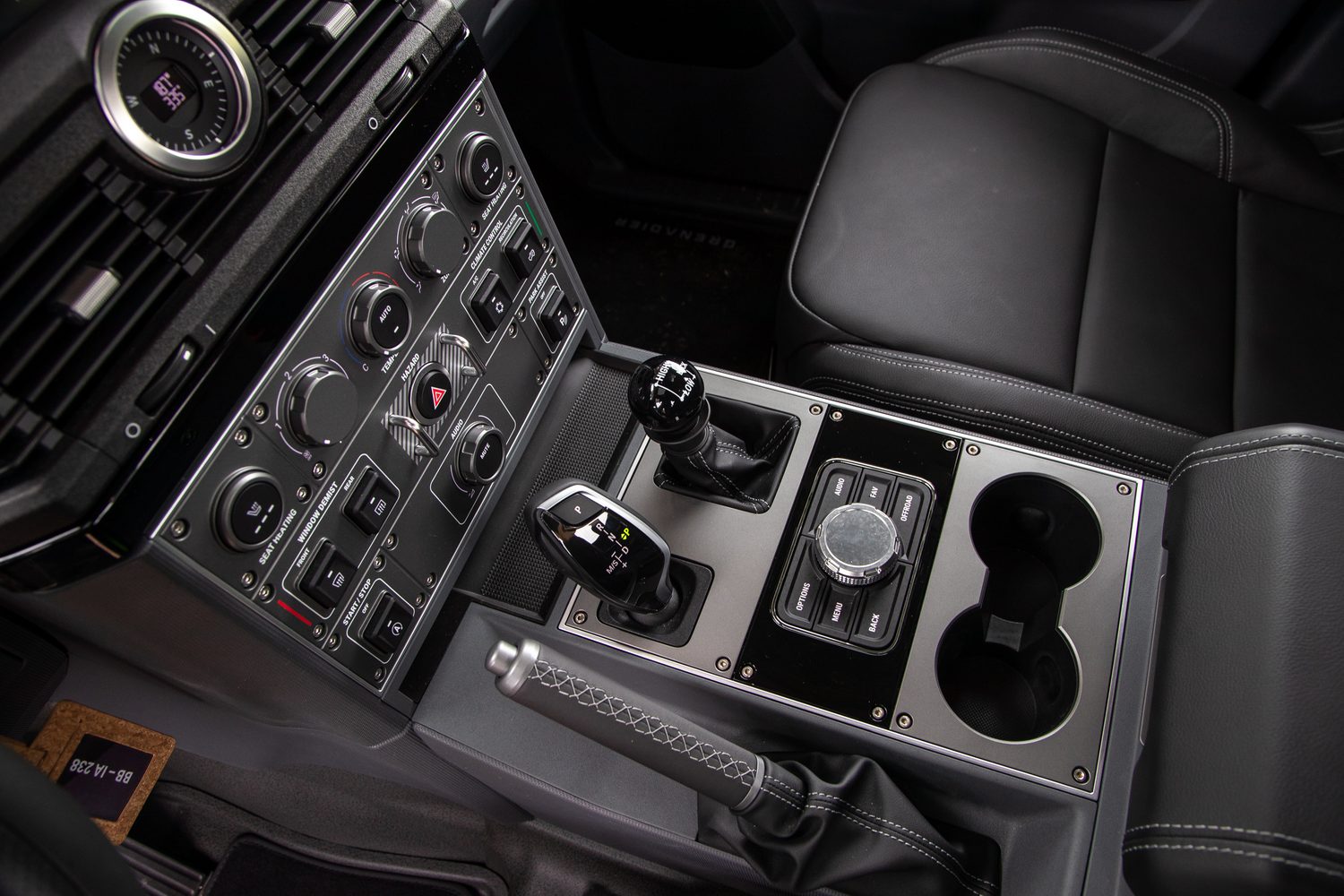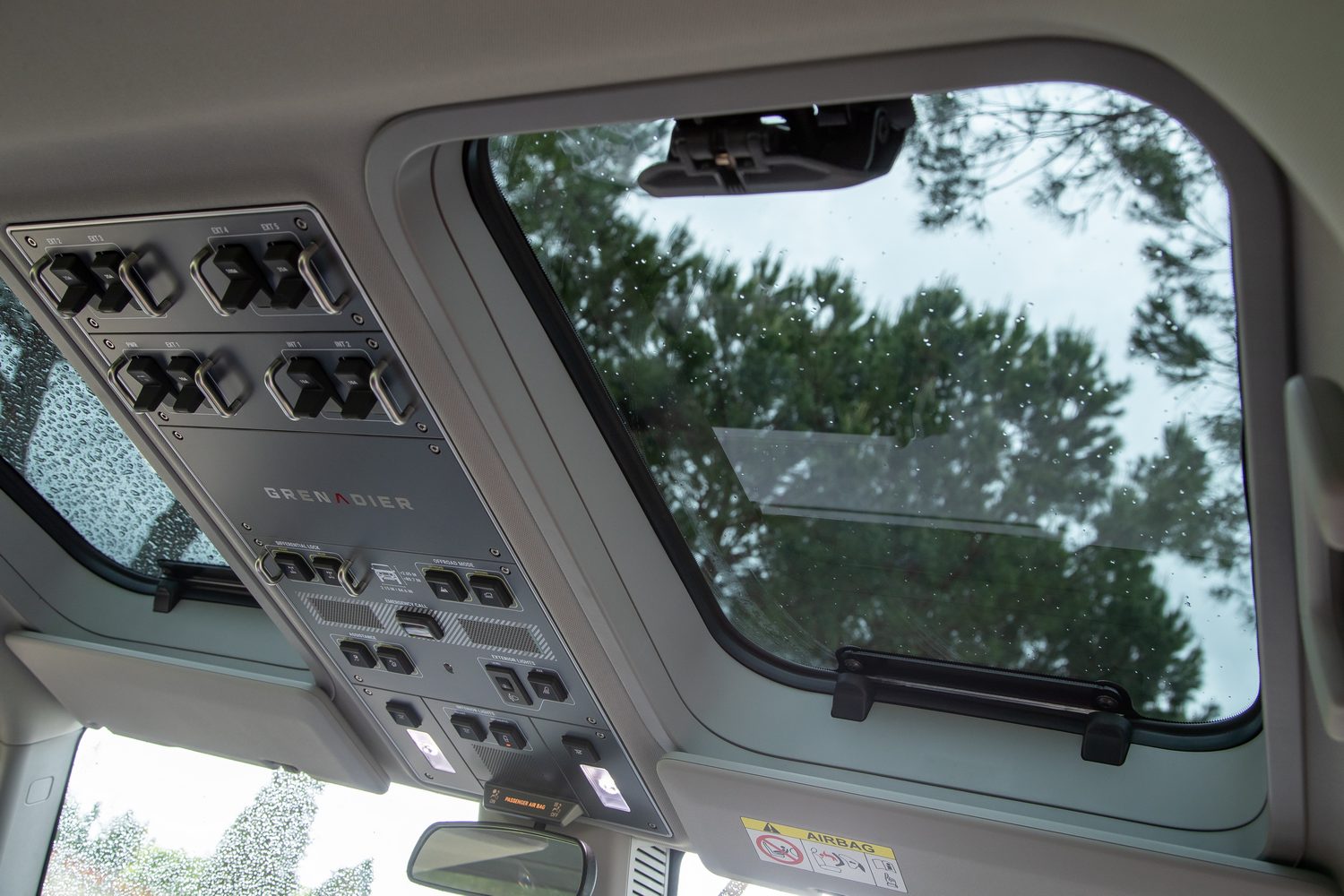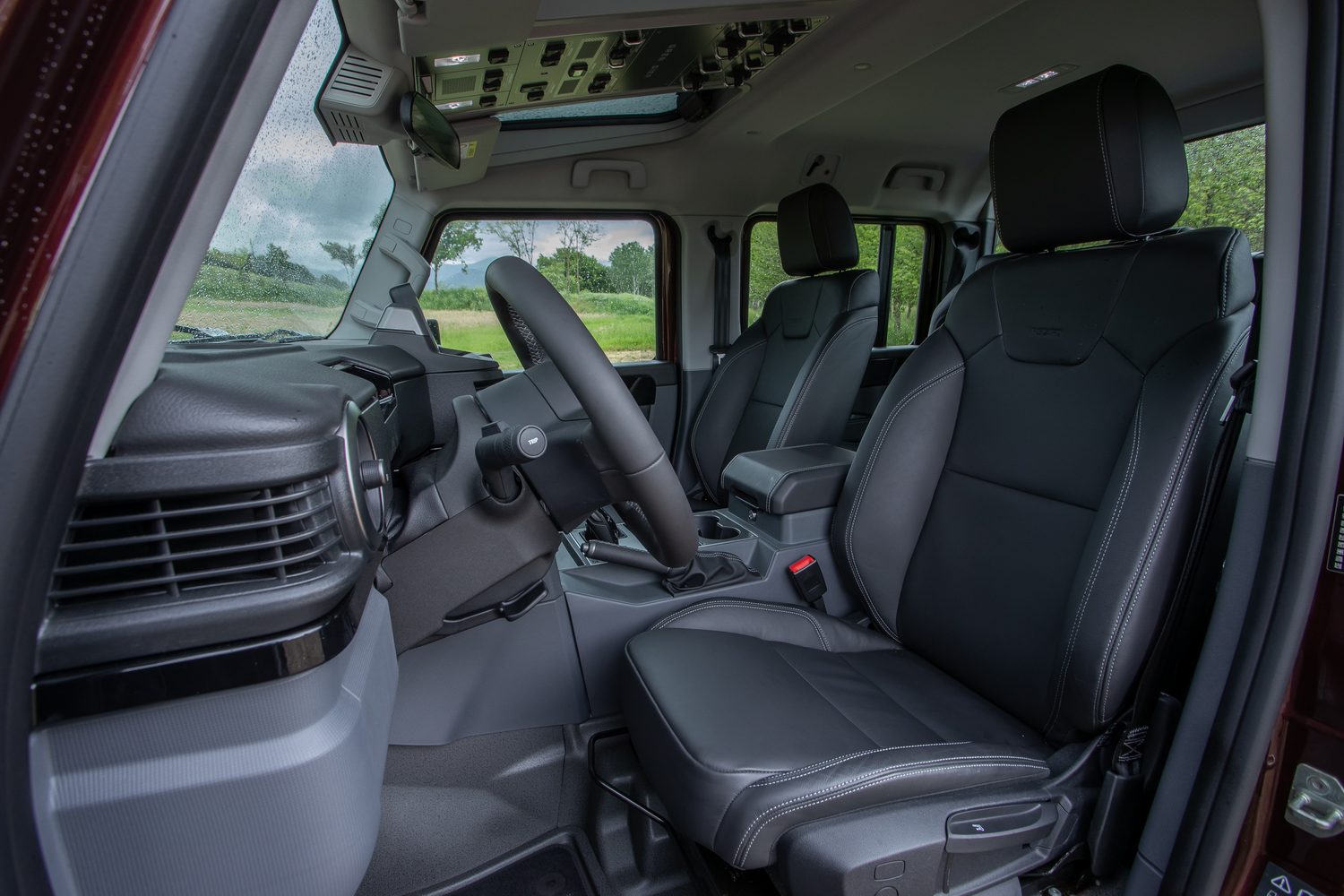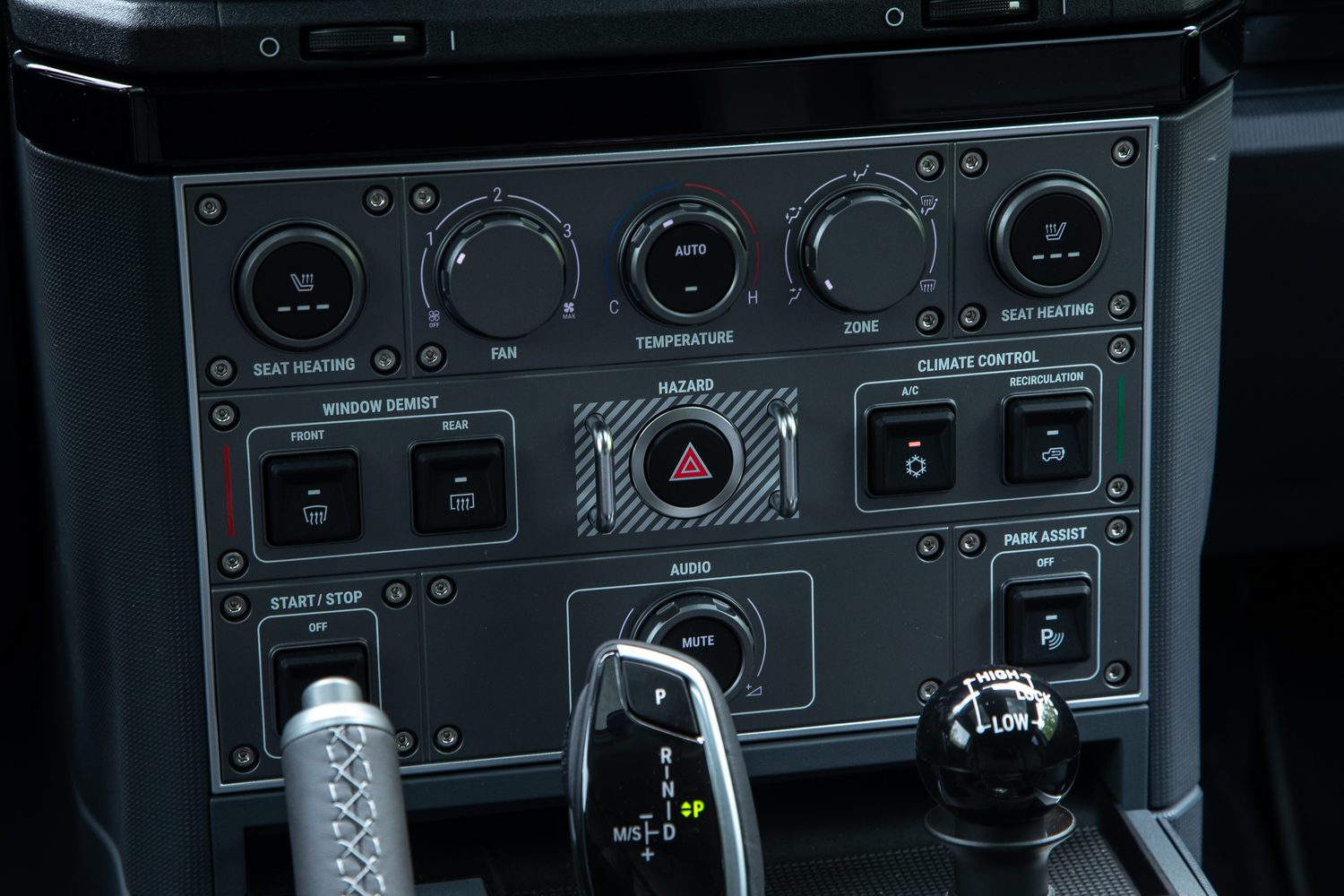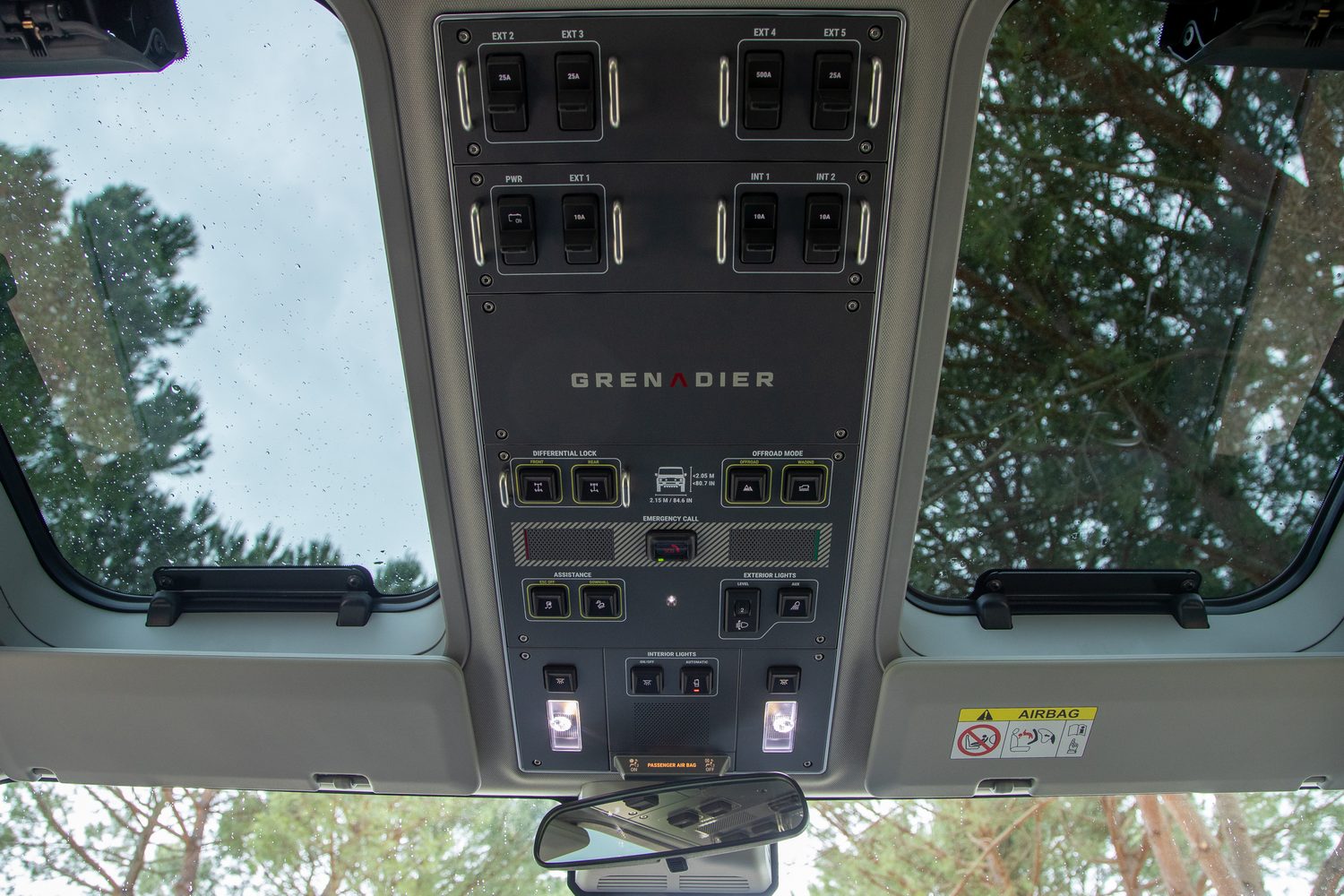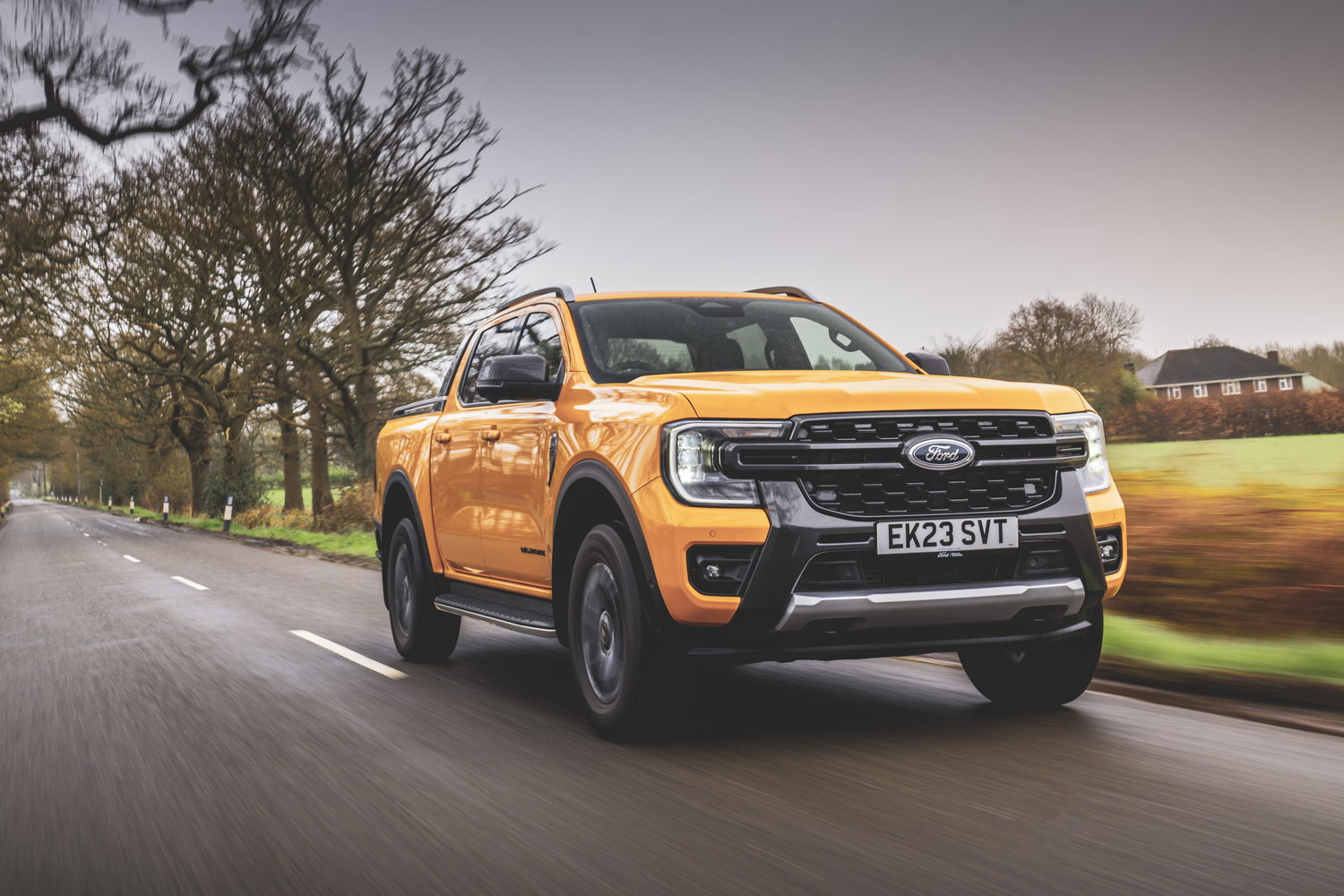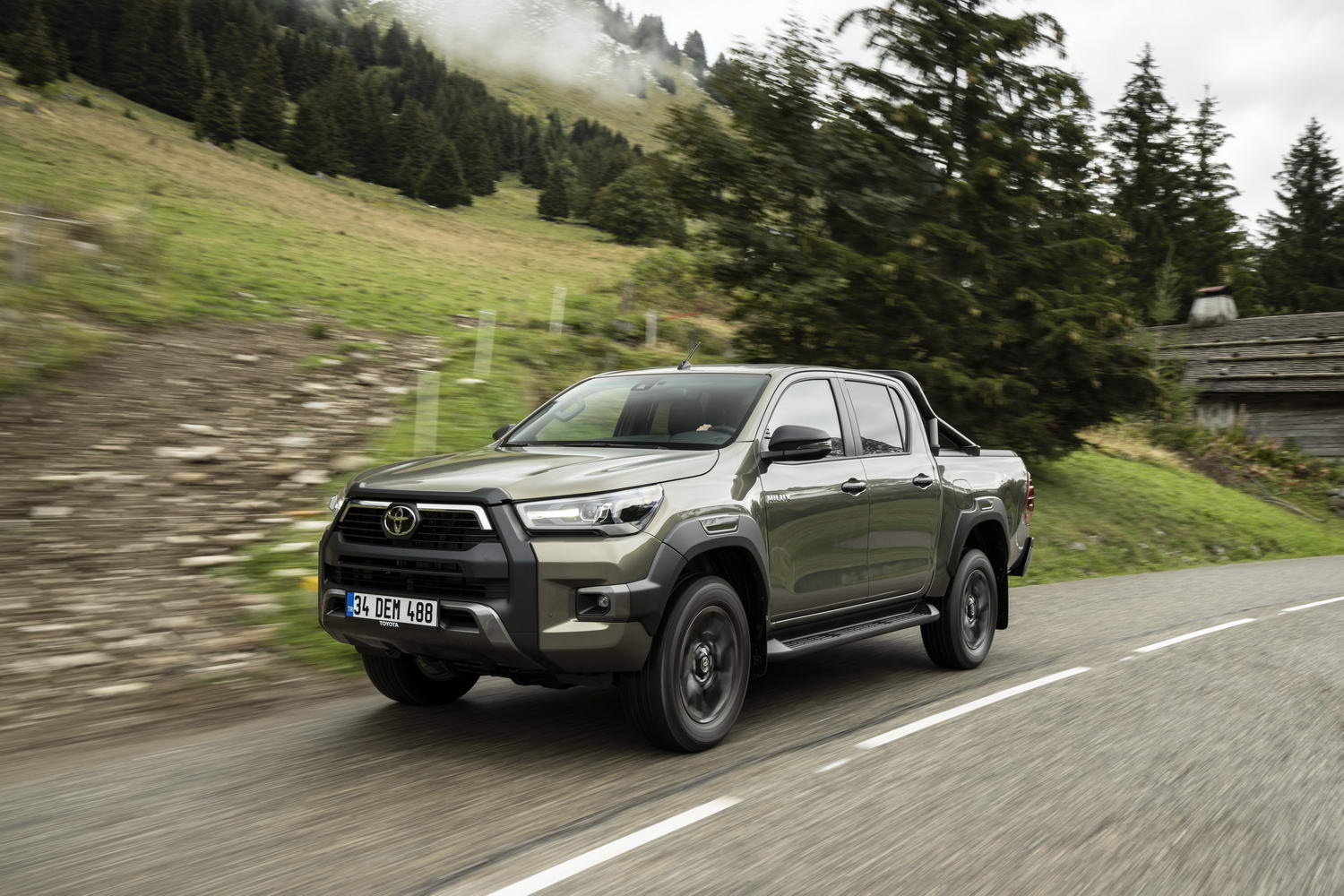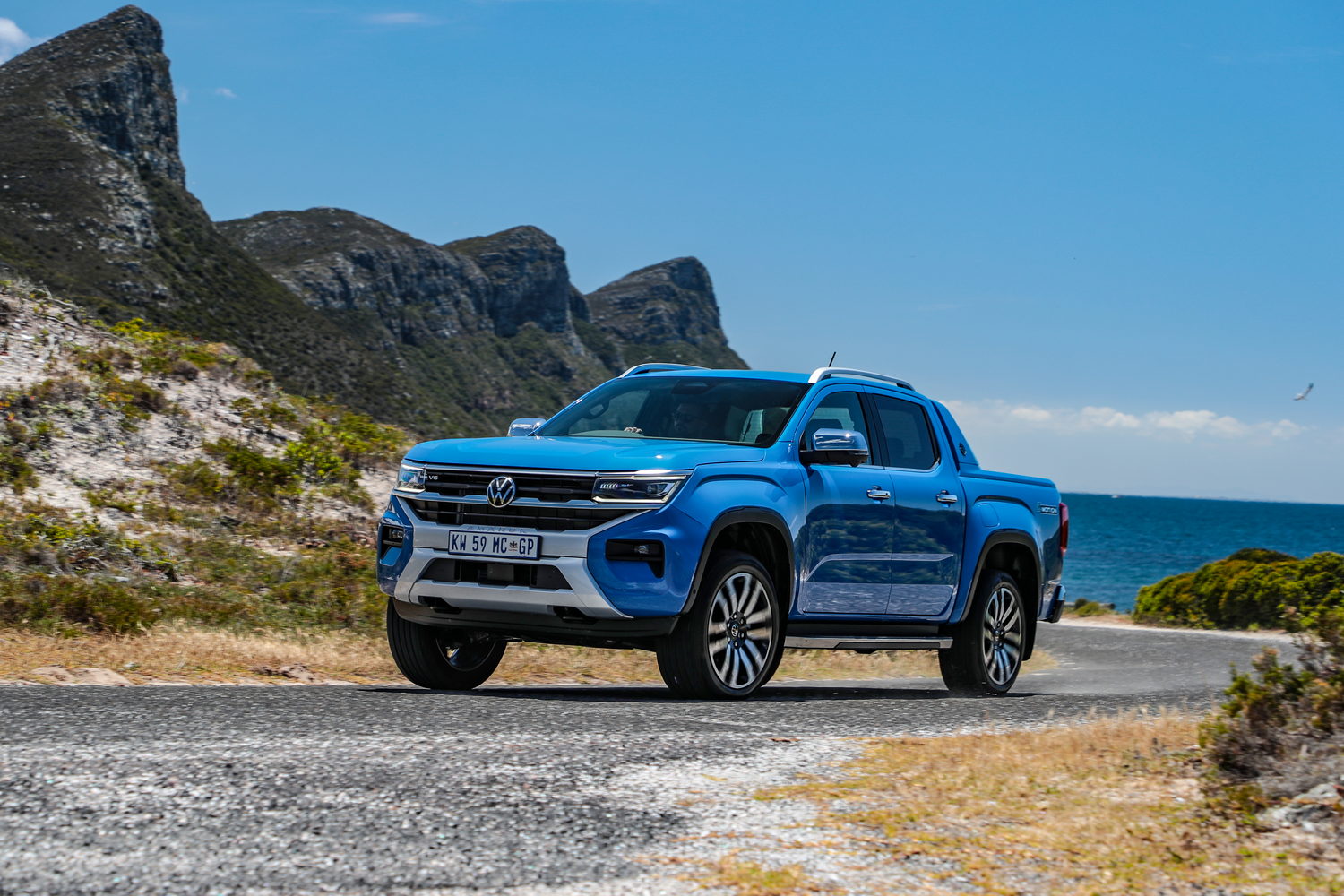Billed as a spiritual successor to the old Land Rover Defender, the Ineos Grenadier has made quite a splash. And having introduced commercial and passenger 4x4 versions of the Grenadier, Ineos is now completing the set with the new Quartermaster double-cab pick-up truck. Like the more conventionally shaped Grenadiers, it’s designed to fill the hole left by the old Defender, albeit with a bit more luxury and polish. The question is, does it do the job?
In the metal
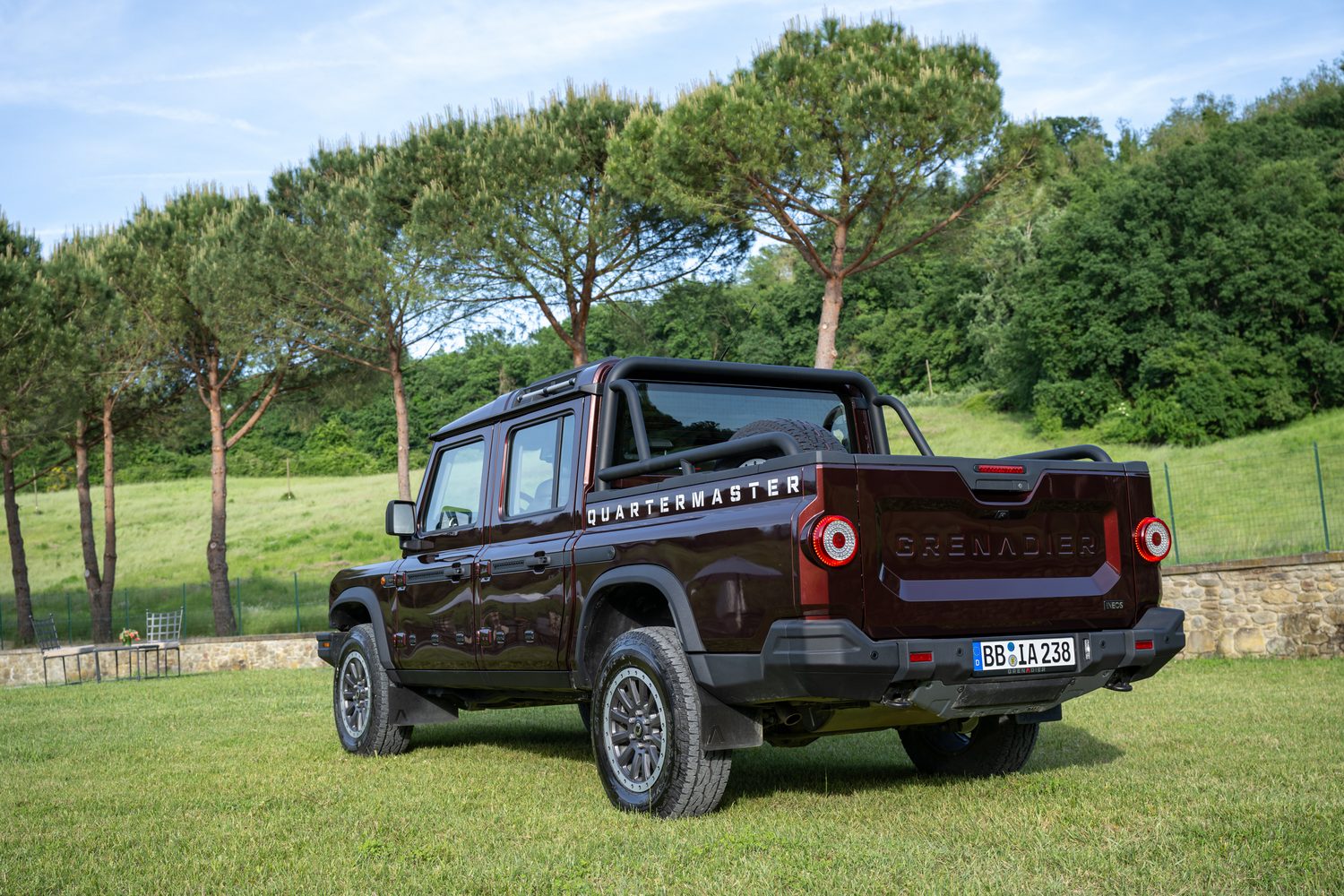
Unsurprisingly, the Quartermaster version of the Grenadier has inherited much of the same image, and the forward two-thirds are pretty much identical to that of the more SUV-shaped models. If you can ever call the Grenadier SUV-shaped.
To us, the vehicle has always looked like a gawky rip-off of the old Land Rover Defender, and that’s probably somewhat intentional, given the transition to the current Defender left plenty of the original car’s fans wondering what to buy next. Anyway, the Grenadier is not a pretty thing, and the Quartermaster looks even more awkward. It’s a bit longer, which probably doesn’t help, while the rear end looks a bit under-designed, particularly alongside the rest of the vehicle.
The whole style of the vehicle is busy, too, with all the same features as the Grenadier in evidence. There are those funny rails down the sides, for instance, allowing you to clip extras on to the doors, and you can have a winch mounted in the front bumper, while electrical hook-ups are hidden in the roof for spotlights and so on. Whatever you think of the design, the focus on useful stuff is impressive.
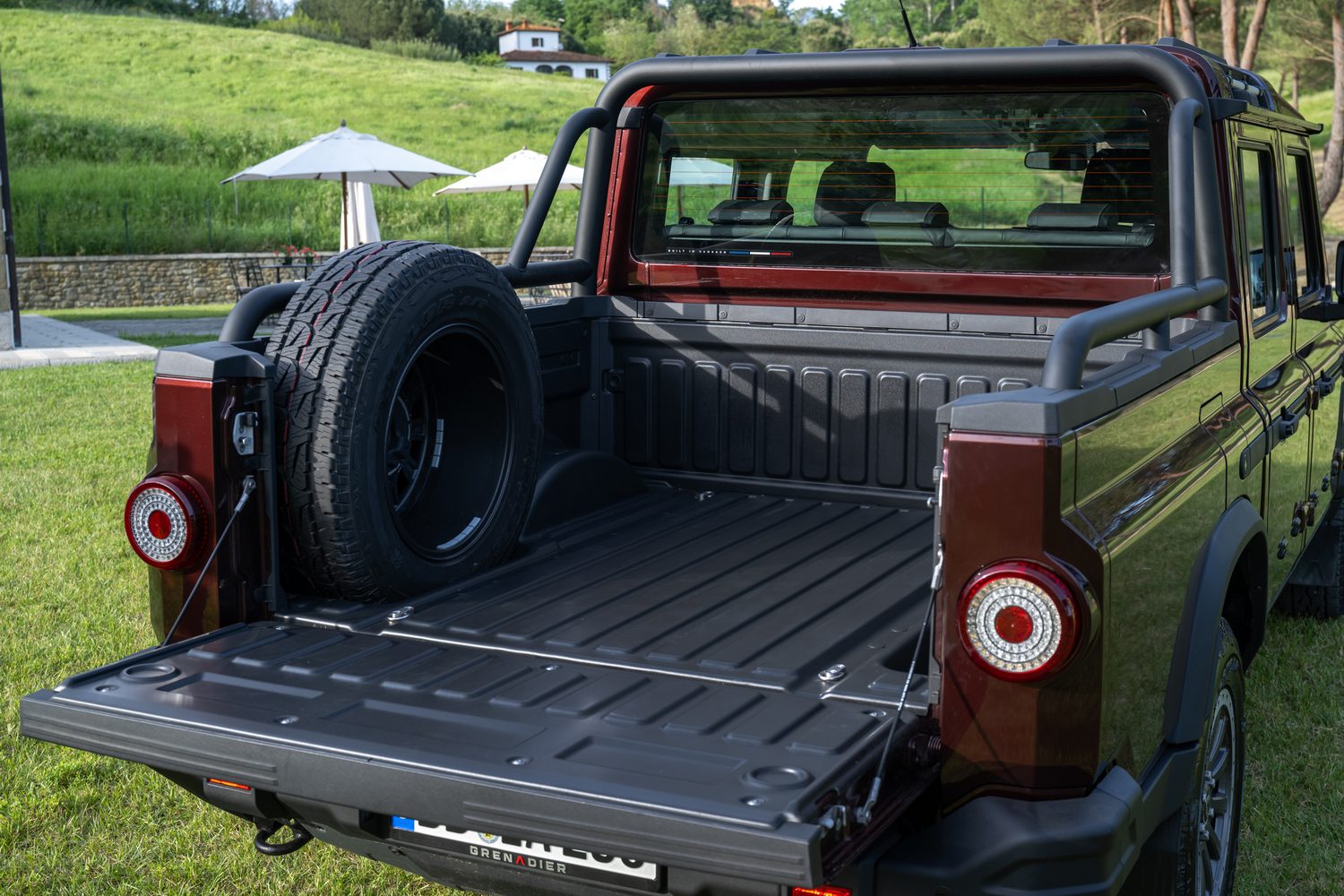
As is the commitment to switchgear in the cabin. Like the Grenadier, the Quartermaster gets a central panel festooned with switches, all of which are apparently designed for use while wearing thick winter gloves, and there’s an overhead panel, too. Taking inspiration from airliners, the overhead panel is a bit of a gimmick in a way, but then you consider Ineos ran out of dashboard space pretty quickly, so it’s probably more of a necessity than it would otherwise be.
Either way, the interior has something cool about it, even if it’s hardly a design sensation. The central screen that includes the speedo is a little bit old-school in its pattern, but then so are most of the Quartermaster’s features. At least the touchscreen comes with loads of off-road functions, including a system that tells you where the wheels are pointing and whether the vehicle is pitching or rolling.
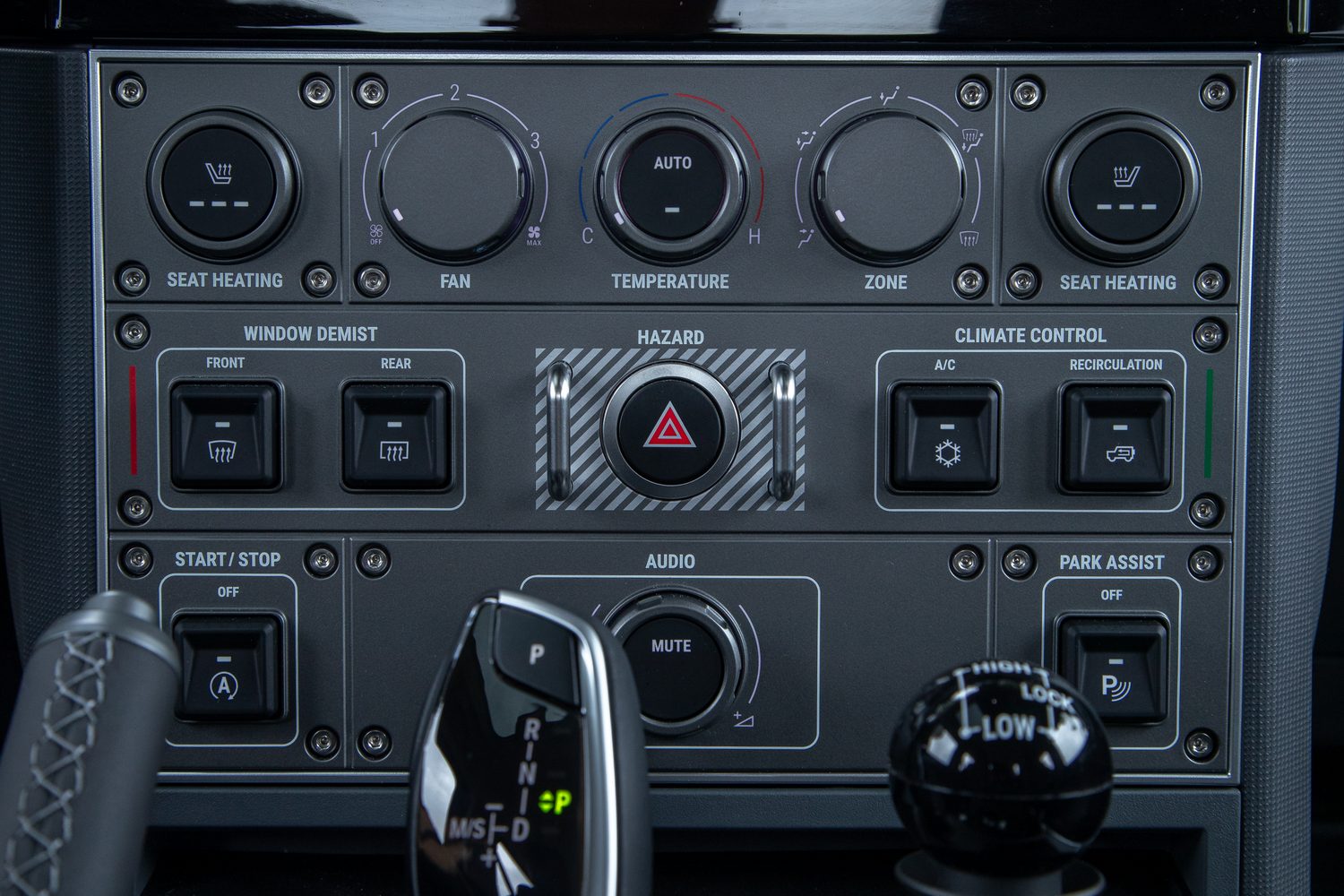
Compared with other pick-up trucks, the Quartermaster’s cabin feels reasonably upmarket, but then it would have to be given the vehicle is more expensive than most pick-ups. Yet it still doesn’t feel as premium as the cabin of a family SUV, because there are some low-rent materials knocking about and some odd edges that feel mismatched.
But ruggedness is the name of the game here, and Ineos has IP-rated all its switchgear so you can hose out the footwells - there are even drain plugs to let the muddy water out when you’re done - but Ineos doesn’t recommend pointing a Kaercher at the buttons themselves, because they aren’t quite that waterproof.
Naturally, that kind of practicality will appeal to business customers and private buyers alike, but they’ll both be surprised to find the Quartermaster has practicality issues. First, there’s the rear seats, which are a bit more cramped than in a passenger-carrying Grenadier because the company has made room for the load bed. That might be a trade-off worth making for some, especially as a Ranger’s rear seats aren’t especially capacious either, but the Ranger offers more payload than the Quartermaster.
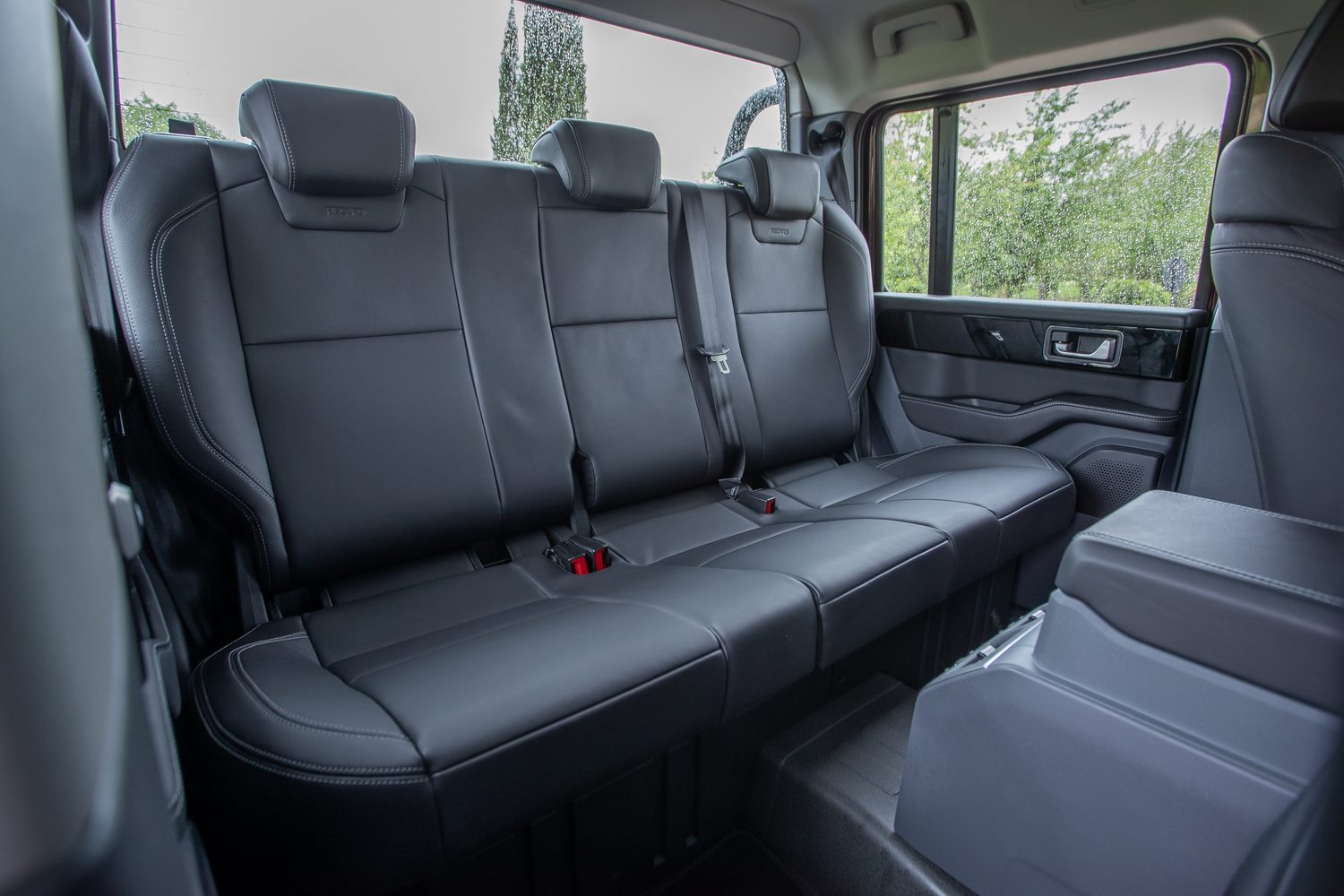
That’s because Ineos hasn’t changed the Quartermaster’s suspension much, and there isn’t much difference in capacity as a result. Which means the petrol-powered Quartermaster is only able to carry 835kg of cargo - and the diesel carries even less. When you can stick more than a tonne in the back of a Ranger, that looks like a shortcoming of note.
Driving it
As with the more conventional Grenadier, the Quartermaster comes with a choice of two BMW-sourced engines. Both are 3.0-litre straight-six units, and they come in petrol and diesel forms. Perhaps unsurprisingly, the diesel is expected to be the more popular choice, but having driven the diesel-powered Grenadier, it’s the petrol version of the Quartermaster we were keen to try.
Producing up to 286hp, it’s just 37hp more powerful than the diesel, but it’s a smooth, gutsy unit that sees service in some brilliant BMWs - albeit in different states of tune. In the Grenadier Quartermaster, though, the computer control systems have been tuned with torque - the grunt that gives you a shove in the back and keeps things moving in tricky conditions at low speeds - in mind, and 450Nm of the stuff heads to the wheels via the standard eight-speed automatic gearbox.
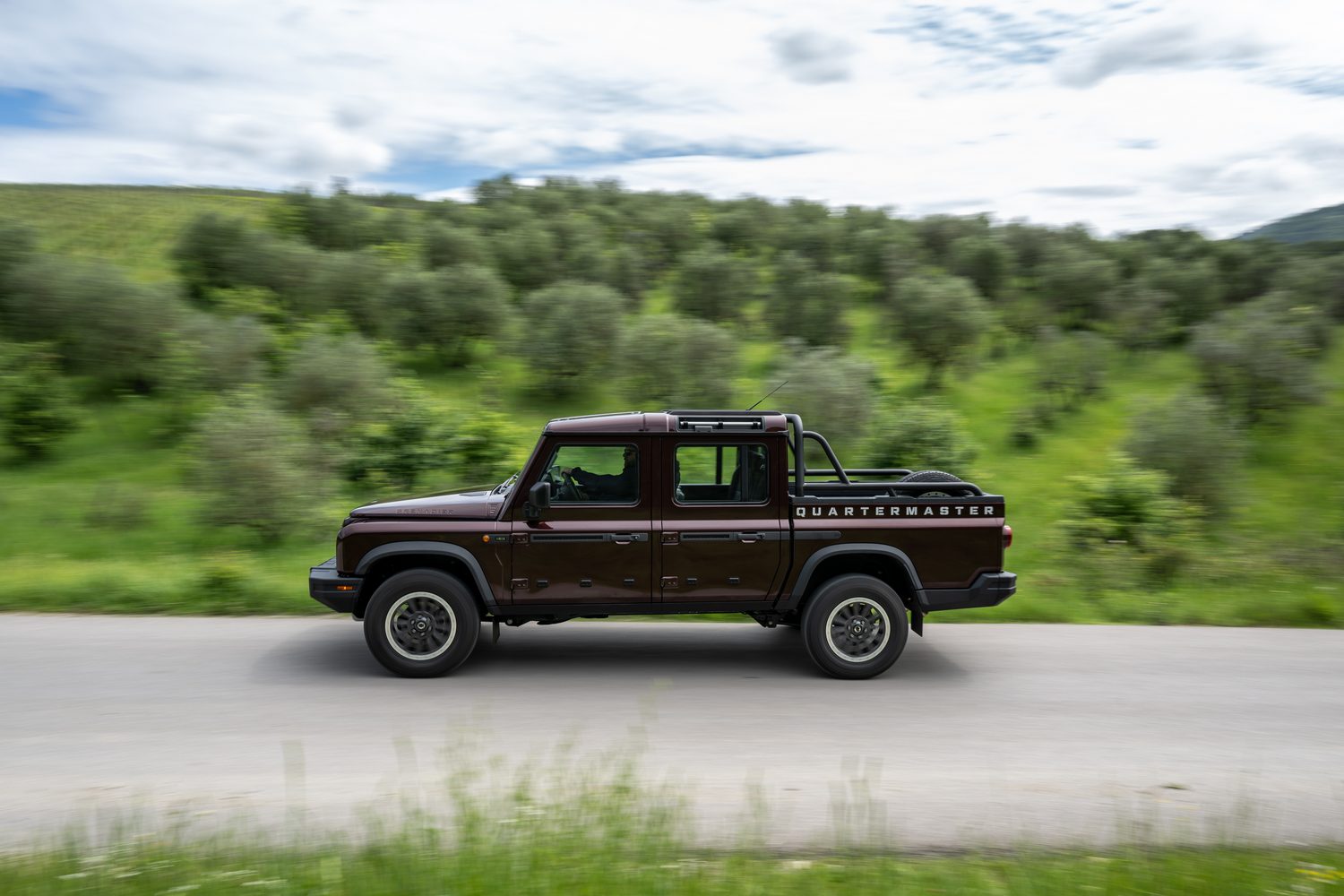
That makes it remarkably good at getting the Quartermaster moving, and though diesel is usually king when it comes to off-roading, the petrol Quartermaster has more than enough performance to make progress over any terrain. Admittedly, the diesel is even better, but even in petrol form, the Quartermaster is a brilliantly capable vehicle.
Like the standard Grenadier, it is built to head off-road, and it has all the tools it needs to do that. Equal ground clearance to the standard car means it can clamber over most things with ease, while huge amounts of axle articulation allow it to do so with minimal body movement. There are no Land Rover-like terrain modes, but there is a low-ratio gearbox with differential locks, allowing for greater traction on loose or slippery surfaces. And it’s all controlled by an old-school lever, rather than a button.
But Ineos hasn’t ignored tech altogether. An off-road mode activated by one of the myriad roof panel switches turns off some of the safety systems that might irritate on the road, but you’re technically not allowed to use that setting on the black stuff. And that’s not the only tech. There’s a hill descent control system on board, while the touchscreen has an off-road screen displaying pitch and roll and even the steering angle, all of which is supposed to help you navigate trying terrain. There’s a compass in the dash, too, quite literally helping you to get your bearings when you venture off the beaten track.
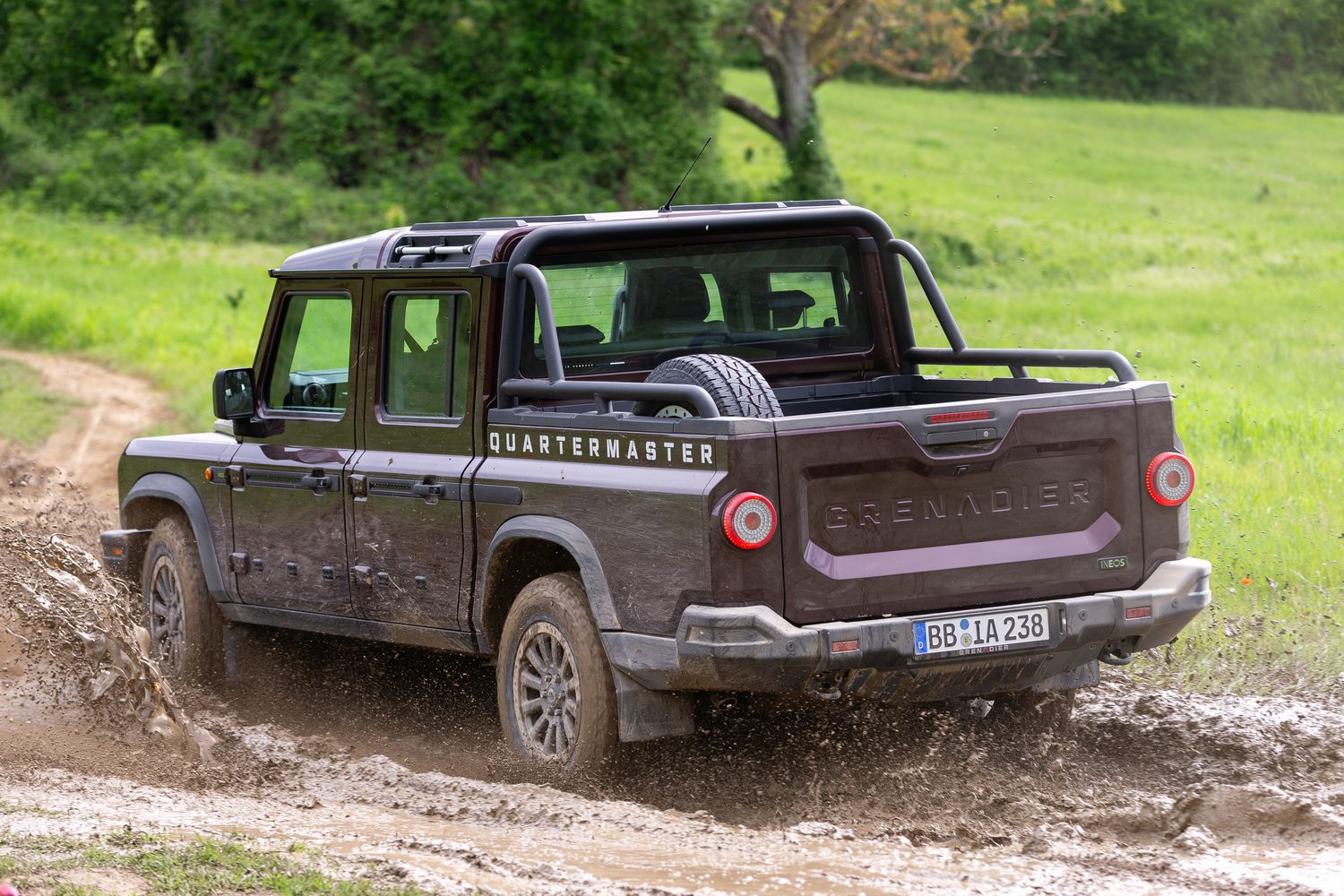
If you want, you can add to that with a winch, an off-road recovery kit and two more differential locks, as well as chunky BF Goodrich all-terrain tyres and a raised air intake designed to keep some of the dust away from the air filter. And that’s before you look at goodies including clever light bars and other aftermarket extras that the Grenadier is designed to accommodate.
The point is, this is a vehicle that has going off road in mind, and it’s very good at it. Despite the extra length that means it can’t quite tackle such steep slopes and such sharp breakover angles as the Grenadier 4x4, it still takes muddy ruts, rocky inclines and water up to 800mm deep in its stride. It’s nigh on unstoppable.
Impressively, it’s also very stable, with remarkably little body movement even when you traverse really rough surfaces or dip into enormous potholes. Yes, it moves a bit - the laws of physics haven’t changed - but it’ll have to be doing something really ambitious (or going a bit too fast) before it throws you around noticeably.
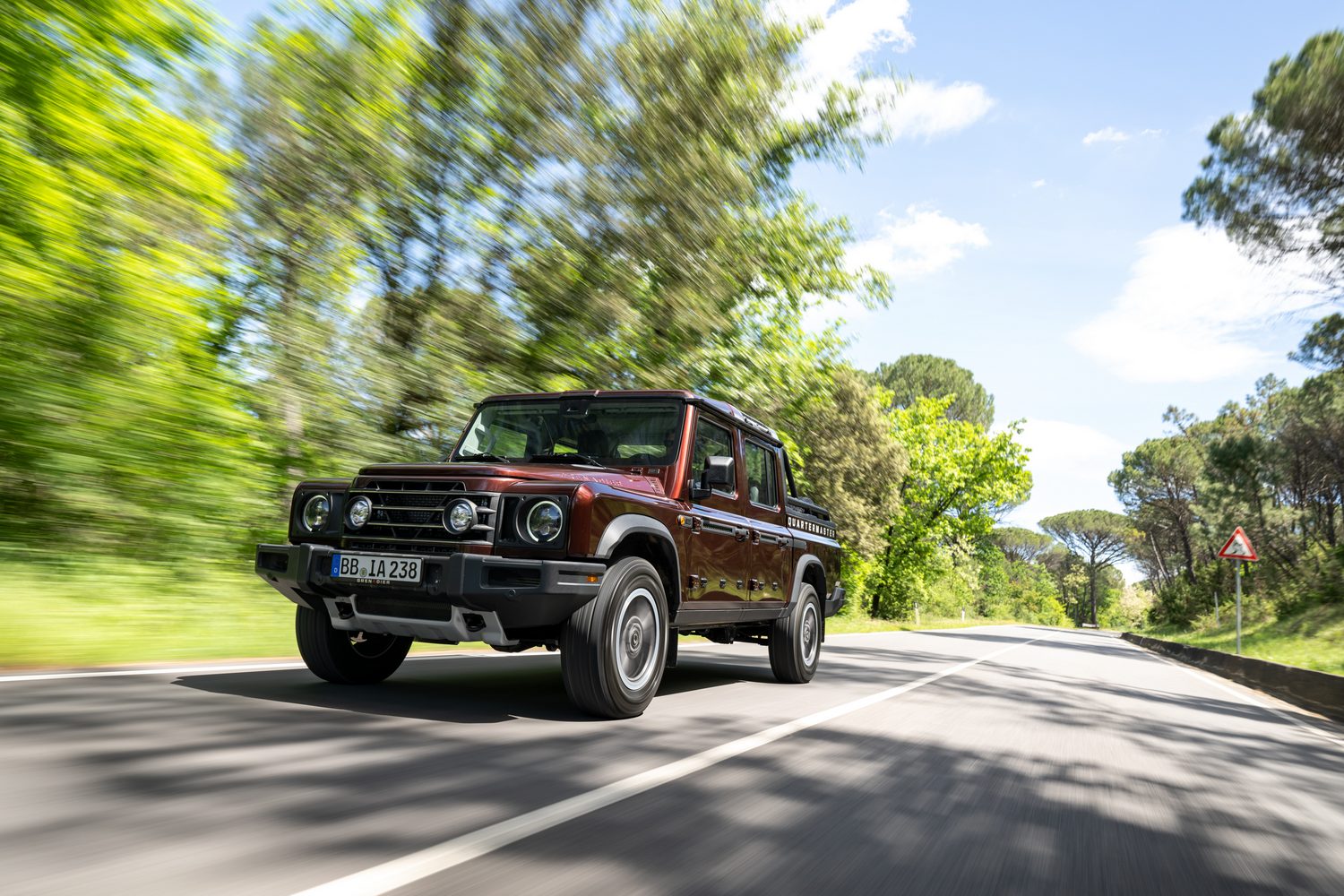
For all that capability, though, the Quartermaster has its limitations as a commercial vehicle. Despite the size and strength, the vehicle doesn’t offer that great a payload, at just 835kg. When other pick-ups offer more than one tonne of carrying capacity, that’s a bit of a disappointment. At least the towing weight of 3,500kg is enough to compete with the likes of the Ford Ranger and Volkswagen Amarok.
On the road, however, it’s a different story. The Ranger and Amarok are remarkably SUV-like to drive, with steering that’s light but precise and reasonable body control. But the Quartermaster feels somewhat different, with very heavy, sluggish steering that doesn’t self-centre, making the vehicle quite hard work on a winding road. And the turning circle isn’t great either, which makes life even more difficult when manoeuvring.
In fairness, it’s quite good fun in its own way. As long as turns aren’t too tight, the steering weight is reassuring, and the body control means it doesn’t lean over too much in the bends. But it never feels like an overgrown SUV because it can’t help but lumber from place to place.
A bigger problem is the ride, which is a disappointment given the stability and axle articulation available on rough terrain. Of course, pick-up trucks are often compromised due to the need to carry heavy loads in the back, and we accept there’s some of that going on here, but other trucks are hamstrung by the same requirements, and most of them make a better job of it. Even on relatively smooth surfaces, the Quartermaster seems to find hitherto unobserved lumps and bumps in a way that a Ford Ranger just wouldn’t. Sure, the Ford might bobble about a bit at the rear when there’s nothing in the load bed, but even with three people on board and a few kilos over the rear axle, the Quartermaster is noticeably less comfortable than the already slightly jiggly Grenadier.
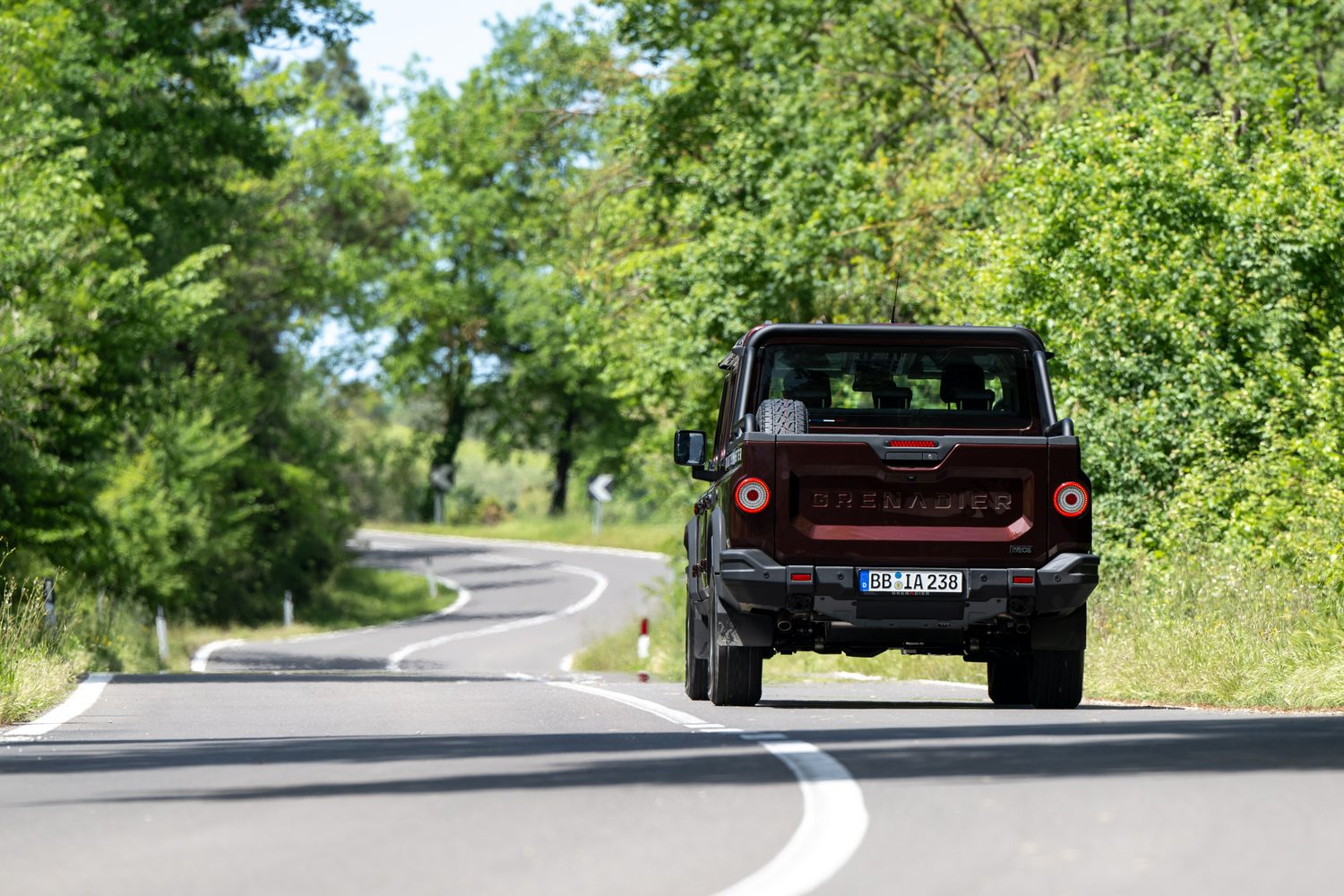
And it isn’t just the fact you feel the bumps that’s concerning. It’s the way they make the whole vehicle - and, by extension, its occupants - shudder with every impact. It’s as though the whole thing is shaken to its core by what would normally be considered a minor imperfection in the asphalt. And it doesn’t just feel unsettled; it really thumps its way over them. Worse still, we’re talking about the motorway ride here. Around town, it’s almost intolerable for anything more than about 15 minutes.
In scant defence of the Ineos, our test car was fitted with chunky BF Goodrich off-road tyres, which may have accounted for some of the rubberiness in the ride, although not all of it. And the standard Grenadier is only a bit better. But this isn’t just an uncomfortable vehicle by the standards of posh SUVs; it’s an uncomfortable pick-up truck, full stop.
But the suspension isn’t the only culprit here. The blocky bodywork means there’s loads of wind noise at anything above about 50km/h and choosing the BF Goodrich tyres means there’s quite a lot of tyre roar, too.
What you get for your money
Buyers get a choice of three different Grenadier Quartermaster variants, with the standard car intended to be a baseline on which customers can build their own configuration. But even that comes with LED headlights, roof rails and protection strips, off-road navigation and the overhead control panel, as well as the central touchscreen and the bulky buttons. Heavy-duty suspension is standard too, along with locking central differentials and the permanent all-wheel-drive system.
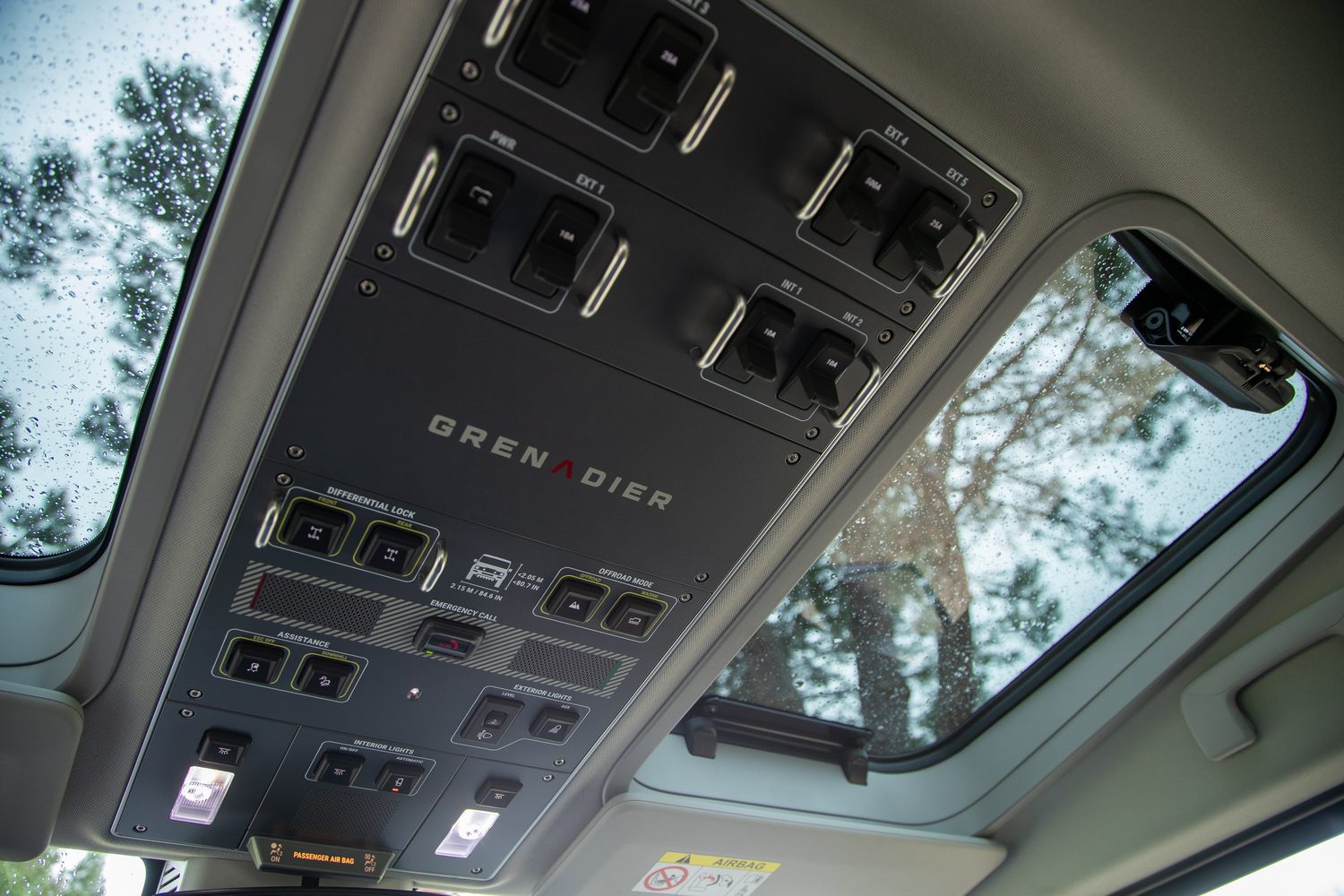
Above that is a pair of other variants inspired by Ineos-owned motorcycle jacket company Belstaff’s products, so there are Fieldmaster and Trialmaster versions on offer. The Fieldmaster is the more luxury-orientated of the two, with heated leather seats and a premium sound system, as well as carpet mats and 18-inch alloy wheels, whereas the Trialmaster is the off-road option with 17-inch steel wheels, a raised air intake and a power take-off for towing, plus off-road tyres and two extra differential locks. However, both come with a reversing camera and parking sensors, as well as auxiliary charge points.
Summary
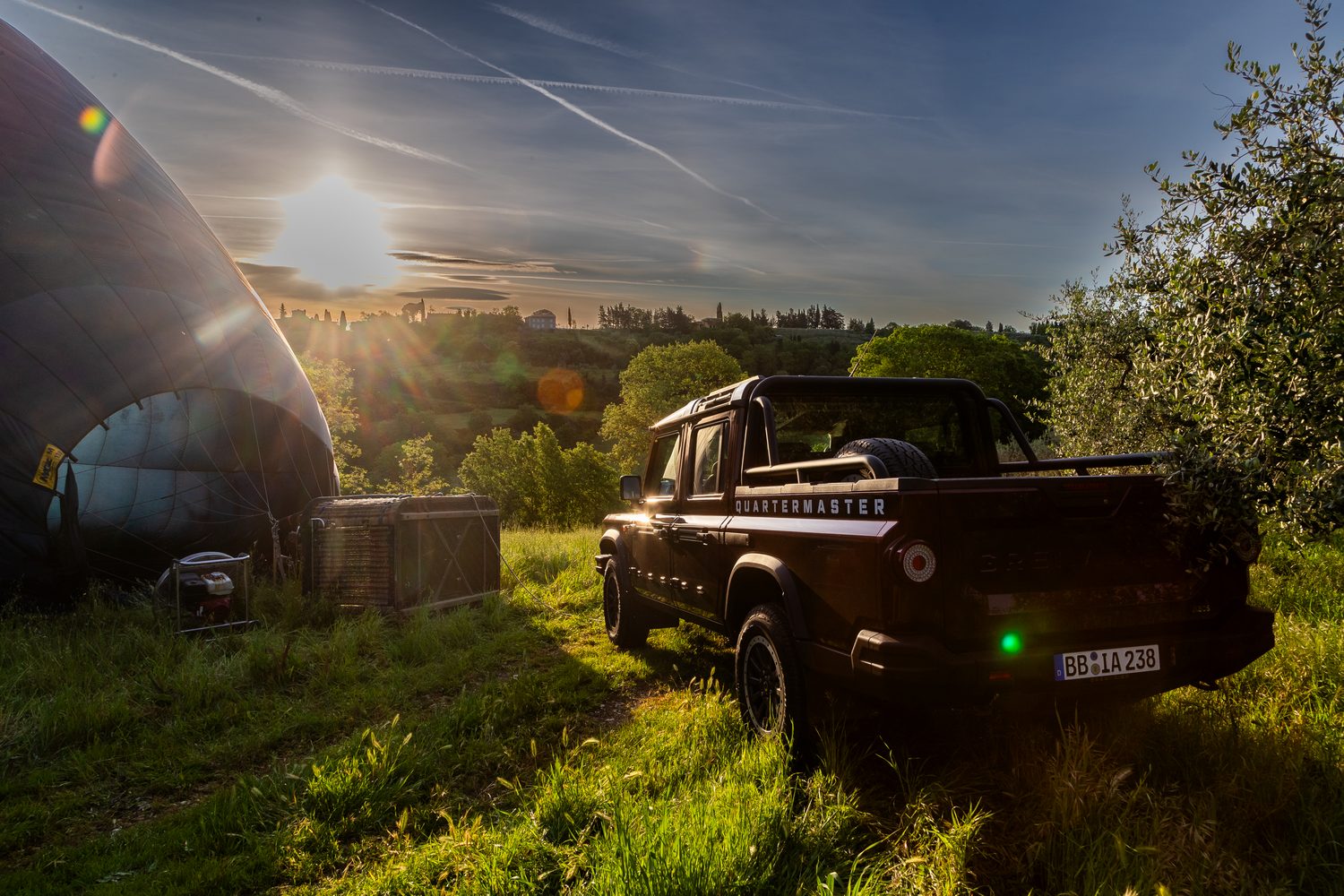
In a way, the Quartermaster does fill the gap left by the old Defender pick-up truck, but it almost does so with a little too much accuracy. Like the Defender, it’s a disappointing drive on the road, and like the Defender, it’s expensive for what it is. But the old Defender is no more not because of some capability shortfall; it’s gone because the market for an expensive utilitarian pick-up has shrunk, and customers after a lifestyle vehicle demand a bit more polish.
On the polish front, the Quartermaster really struggles alongside the Ford Ranger and VW Amarok siblings, and even alongside the Grenadier 4x4 itself. So, although it has some character, it’s a very expensive option that’s trying to compete with cheaper and more rounded products. Unless you’re really into the image, it’s a tough sell, and if you are into the image, the more conventional, cheaper, and more comfortable regular Grenadier will arguably be a better bet.

